PRADYOT
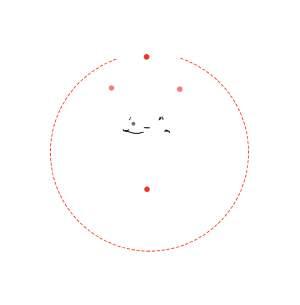
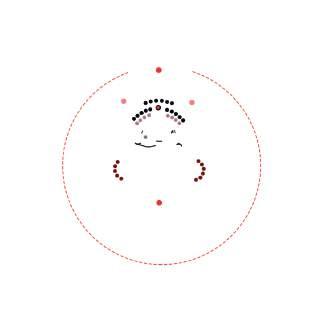

Ray of Light
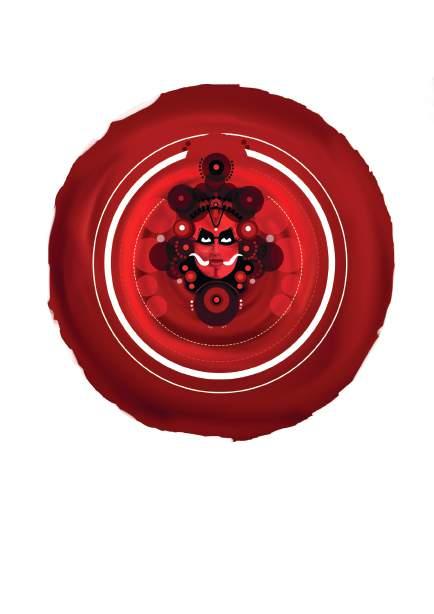
Preface
We started writing this book shortly after the beginning of our architectural design for this semester. As architecture students, our quests to imbibe knowledge before getting out in the field has become our duty over time. This led to our pursuit of understanding the working of arts and craft in Kerala.
First and foremost, we hope to provide a brief general assessment on the different arts and crafts in Kerala. The scope and contents of the various chapters of the book have been so planned as to make each chapter self-contained even at the risk of repetition.
Secondly, we would like to acknowledge that exploring the arts and crafts of Kerala was a surreal experience and we hope that the same feeling is evoked in the reader.
In the execution of this extensive and multifarious undertaking; We, the S7 Batch of Marian Architecture and Planning take satisfaction in knowing we have done our very best and in this spirit, we lay rest to the manuscript of this volume.
We would be happy if this book comes to be accepted in due course as a work of approbation by paramours of Kerala Arts and Crafts.
Thank you
Acknowledgement
The culture that we follow shows our inner identity in an open-minded way. Akin, the culture of a place portrays its greatness and prosperity to the entire world and drags everyone to explore and one such culturally rich destination is Kerala.
Kerala’s rich cultural heritage is depicted in its art and crafts. Kerala is well known for its articulate craftsmanship and vibrant art forms done immaculately captivating visitors and audiences with an ethereal experience which is an intimate part of her tradition. Getting to document Kerala’s art and craft has been a very fortunate opportunity.
This would not have been possible by the continued support and guidance of our mentors Ar. Adarsh Viswam, Ar. Goutham S, Ar. Devi Syam, Ar. Vivek Venugopal. We also extend our sincere gratitude to all the faculties and staff of MCAP for their unending love and support.
We sincerely hope that our efforts to help people understand the extraordinariness of art and crafts in Kerala.




PRADYOT Ray of Light Contents 1. INTRODUCTION TO ARTS AND CRAFTS IN KERALA 2. HISTORY AND EVOLUTION OF ARTS AND CRAFTS IN KERALA 3. DIFFERENCE BETWEEN ARTS AND CRAFTS 4. TYPES OF ARTS AND CRAFTS 5. EQUIPMENT AND TECHNIQUES INVOLVED IN DIFFERENT TYPES OF ARTS 6. EQUIPMENT AND TECHNIQUES INVOLVED IN DIFFERENT TYPES OF CRAFTS 7. SPATIAL REQUIREMENT FOR DIFFERENT TYPES OF ARTS 8. SPATIAL REQUIREMENT FOR DIFFERENT TYPES OF CRAFTS THE TEAM ...............................................2 .............................................10 .............................................20 .............................................30 .............................................48 .............................................68 .............................................88 ...........................................102 . ..........................................121
Rajasthan Madhya Pradesh Gujarat Maharashtra Telengana
Chhattisgarh
Jharkhand
Assam Meghlaya
Odisha
Bihar West Bengal Goa Karnataka
Andhra Pradesh Tamil Nadu Kerala
Manipur
Arunachal Pradesh Tripura Mizoram
Cane Carpet Wood Wool
Nagaland Silk Embroidery Toy/puppet Shell crafts Copper Terracot ta Painting CRAFT MAP OF INDIA
03 | Introduction brochure published by handicrafts
Jammu and K ashmir Himachal pradesh Punjab Uttarakhand Har yana Delhi Uttar Pradesh
-
Arts and crafts are interrelated to each other. They reflects the speciality of any nation. Painting, sculpture, architecture, music, dance` etc are main art forms which have been around since the begining of humankind. Indian arts and crafts are essential component of indian culture.
There are people of diffrent castes, cultures, norms, traditions, values, ethics and religious all over the country. They practice diffrent occupations and are involved in the production of handicrafts and artworks.
ARTS AND CRAFTS IN KERALA
Kerala is renowed for its articulate craftsmanship, which is an intimate part of tradition. The local arts and crafts in industry in kerala is so strong in which they sell handicrafts items such as carvings in metal and wood like rosewood and sandalwood, coconut shell and coir products etc. Its almost like the populance of kerala has art in its blood.
The variety of arts and crafts in kerala is very lively and emphasis a lot of use of colours. Intricate design and vibrant details are important elements on kerala craft works.
The local craftsmens of kerala is exel in traditional music instruments like mrindagam, shudda, chenda, tabala, edaka etc kerala has an edge as far as eco friendly handicrafts are concerned because it has a tradition of making beautiful handicrafts with articles like ivory, bamboo, palm leaves , coconut shell etc.
The traditinal art form includes kathakali, chakyaarkoothu, krishnattam, koodiyattam, theyya, velakal, thiruvathirakali, kolkali etc. Kerala is a home to stunnigly unique variety of art forms which have impacted the social and cultural life of the state, adding to its typical character. Moreover kerala art forms reflects the life and outlook of its people.

Introduction | 04 Mappience India Limited 2001
ARTS AND CRAFTS IN INDIA
Thrissur Iduk k i Kottayam Alappuzha Pathanamthitta Kollam Trivandrum
05 | Introduction development corporation of kerala ltd.1982
K asargod K annur Wayanad Kozhikode Malappuram Palakk ad Ernakulam ART AND CRAFT MAP OF KERALA
FORMATION OF ARTS AND CRAFTS
Formation
In avncient times, humans settled in colonies called tribals and they were used to make utility materials for their basic needs, and that art of making crafts called handicrafts, and the materials called handicrafts goods.
then people began to sell these things on the local markets.
It is now time and people in all areas have gotten more evolved and civilized, and craftspeople have begun to trade their products with growing demand and population.
Current Situation
Currently, handicrafts do not contribute much to job creation or exporting due to pandemic situation in Kerala and other industry related problems.
The handicraft sector, on the other hand, has suffered from its lack of organization, as well as othe restraints such as a low level of education, poor wages, low finance, inadequate introduction to new technologies, a lack of market awareness,and a weak policy structure.
DevelopmentTheyyam
In the past, Arts and Craft developed around temples and palaces and enjoyed the patronage of rulers and feudal chieftains. The end of royalty and the decline in the interest, on the part of the temple authorities, in intricate carvings and mural paintings, led to some kind of stagnation.
However, the demand for fancy-cum-utility articles for use as furniture and decoration at home and abroad has created new avenues for the marketing of the products and sustained the traditional industrial arts and crafts from extinction.
Introduction | 06
brochure published by handicrafts
Laminated wooden Kathakali face
Pottery
Handloom
07 | Introduction https://www.caleidoscope.in/
India has a rich cultural folk tradition. Folklore arts, beliefs, rites and rituals, myths, and rural handicrafts are factors that enrich our folk-tradition.
They became well-known as knowledge transmitted by oral tradition. Folklore has an important role in handing down social norms and religious knowledge and wisdom and in keeping the social structure stable.
The individuals in a society are born into them. It is through these customs and practices that social solidarity remains. Pre-existing cultural rules determine our ideas and behaviour through socialization.
Creating cultural identity
The most important is the collective conscience they produce. The integrity of individuals and equipping them to meet social challenges are a part of this. If the influence exerted by this collective representation is lost, that loss leads an individual to the loss of his self.
This is the most important among the complex crises faced by modern society. In the folk-arts there is no distinction between the actor and the spectator. As the spectator himself becomes a part of the art the artist becomes a part of social integrity.
Societies are made up of structures of cultural rules, established beliefs and practices to which their members are expected to conform.
Each social structure has unique customs and practices as well as systems of beliefs. Folk arts and beliefs play an important role in the timely reforms and establishing of these customs and practices.
Religion and ethnic culture take an important role in the formation of the social structure. Our society consists of structural units based on structural pluralism. Folk arts and folk songs play an important role in their survival.
They stand in relation to the power system in every society. Power system is related to caste, gender and economic status. Folklore opposes the power structure and compromise with it. They preserve ethnic identity also.
IMPORTANCE OF ART AND CRAFT IN PEOPLES LIVES
Introduction | 08 https://www.caleidoscope.in/
Audience spectating folk art
Folk Arts Ritual art







Folk Arts
Folk art flourished in the shadow of social hierarchy in Kerala. Attempts were made to speak out against the social and economic Inequalities of the time. Being sarcastic in tone, the ritual element is minimal. Theaters like Kakkarasi natakam, chavittu natakam, Kurathiyattam are the dissatisfaction of life and record the protest of the oppressed sections against the rulers.
In ancient times people believed that performing various pujas in village temples and other public places would solve all their problems. The 'lower' castes also took advantage of the special status accorded to them by the rituals. With elaborate designs on the face, glamorous ornaments and huge hats, the artists tried to convince everyone, including the upper caste Brahmins, to accept their divinity.
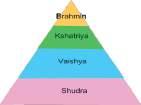
Ritual Arts

Primitive man's knowledge of nature was limited. He had to find a way to protect himself from animals, Thunder, rain and other undefined disasters of nature. Over time, he discovered that he could interfere naturally. Event with the help of sympathetic magic. He began to rely on rituals for success in hunting and crop cultivation also to get the basic needs of day to day life. Some of these rituals include dances and the pronunciation of vague sounds. Many fertility rituals took place to cultivate abundant crops and to get rid of floods, droughts.
As an art form, rituals consist of three parts: myth, ritual, and theater. The basic structure of each of these does not change, Changes and improvements are always framed. For example, mythical singers have the freedom to delete some rules, sometimes creating new myths or linking existing ones to contemporary social life. Repetitive parts can be removed to prevent and create changes It looks more attractive, can change ritual objects, etc. For example, theyattam in Kerala needs toddy as Its ritual objects. At one point when the proh ibition came into force, it was replaced by coconut water. Over the years, the theater component has also undergone many changes.The development of rituals art art Took place gradually. Earlier, ritual art is not performed in front of audience, also artists is not considered as artists,rather they considered as god or mythical Chartres. In modern times, devotees who gather in front of a temple or shrine do not participate in worships ,But remain as spectators.
Dance
forms
https://vitaratours.com/traditional-art-forms-of-kerala
Social hierarchy
Speaking against rulers by performing in sarcastic tone and in their ritual.
Kakkarasi natakam
Chavittu natakam
Kurathi attam
Performing art for success in hunting and crop cultivation
Theyyam
Mudiyettu Theeyattu
Defending animals for protection
11 | History and its evolution of arts and crafts in
Kerala
Dance forms
Mudiyettu
One among the oldest art form, Mudiyettu is ritual dance art. Its evolution as an art starated about or 10th century AD. Mostly performed in the Ernakulam and Kottayam districts of Kerala.
Kathakali
Kathakali originated in the state of Kerala between the 16th and 17th centuries. Earlier these dance forms were staged only in temples.
Mohiniyattam
The 11th century Vishnu temple at Trikodithanam, and the Kidangur Subramanya temple, have several sculptures of female dancers in Mohiniyattam pose. Most of the component items of Mohiniyattam are similar to Bharatnatyam and Kuchipudi
Chakyarkoothu
Chakyar Koothu is one of the most popular folk dances in Kerala. At the starting of 10th and 11th centuries, Chakyar Koothu began to be presented on stage. It is perfomed in koothamabalam.
Koodiyattam
Koodiyattam means ‘acting together’.
Kodiyattam originated in the 9th century AD, based on the Bharata’s “Natyasasthra”. Kudiyattam is enacted inside the temple theater
Oottanthulal
The art was started by the famous poet Kunchan Nambiar in the 18th century. The themes are based on mythology. The art form is based on “Kallyana Sougandhikam”.
Kathakali Mohiniyatam
Pullikali
It is a traditional folk dance of Kerala. Pulikali was introduced by Maharaja Rama Varma Sakthan Thampuran, the King of Cochin from the late 18th to early 19th century, as a celebration of courage, bravery, and the spirit of battle. It is mainly practiced in Thrissur district of Kerala.
Dufmuttu
The origin of Duffmuttu can be traced back to the holy city of Medina. Dafmuttu is a folk art practiced by Muslims in the Malabar region of Kerala.
Oppena
The Term Oppana is believed to be originated from the Arabic word "Affna" Oppana was originated on the occasion of make of Muslim brides. It is popularly practiced across the statees of kerala . Oppena
Theeyattu
Theeyattu is one in that long list of ancient celebrations. Theeyattu is a ritualistic dance usually performed in Bhadrakali temples and in the households of namboothiri and theeyattunni communities.
Theeyattu
Chakyarkoothu
Margamkali
Margamakali is an ancient group and ritual dance practiced and performed by Christians and existed before the arrival of Portuguese missionaries in Kerala. Margamkali
Koodiyattam
Chavittunadakam
Oottanthulal
Chavittu Nadakam is a highly colorful Latin Christian classical art form originated in Cochin, Kerala.And was started in the middle of the 17th century C.E. Chavittu Natakam is a combination of music, dance, imitation, dialogue, and rhythm with its petals Christ, saints and royal history.
Mudiyettu
Pullikali
Dufmuttu
History
arts and crafts in Kerala | 12 https://vitaratours.com/traditional-art-forms-of-kerala
Chavittunadakam
and its evolution of
Theyyam, also known as Kaliyattam, It is a ritual art form so ancient it predates Hinduism (500 BCE), though it has since adapted to include Hindu elements. It's believed to be thousands of years old, from a time when tribal animism was the most common form of worship
Kerala tribal
artforms
Tholpavakoothu
An ancient ritual art form, Traditionally performed by the Pulavans.puppet made of deer Skin, to represent the characters in the epic Ramayana
There are 48 ethnic communities in Kerala.They carry rich cultural, To preserve the rhythm of nature. The people kerala tribes provided status and meaning in a series of fascinating and simple forms of presentation. These art forms often convey their sincere feelings, which are born out of experience in life. Sometimes it is done to emphasize the values, customs and way of life that the nation follows, There are also forms of tribal art that are also made to show respect for Mother Nature.
These forms of tribal art are still present in the tribal villages of the Kerala forested hilltops. Each of these communities has its own a different dance culture. Some of the instruments used by the tribal people are different from the drums various sizes and widely used tone.
Gadhika
Gadhika is perfomed by Adiyaan tribal community in Kerala. It originated by the arrival of Goddess Devi - Mariyamman from mysore in the nearby state of karnataka to wayanad in kerala.The whole presentation of this traditional art is like a dance drama,and a team of musicians playing wind instruments.
The dancers danced around a lit lamp and the lead artist during the dance was in contact with the artists, arguing with them, trying to find a solution and finally doing his best to appease Goddess Devi. Gadhika was made primarily to cure severe diseases and conditions that affected members of the tribal community by giving tribute to the goddess Devi or Mariyamman.
Midhuva Dance

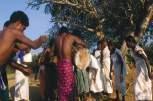
The tribal communities in the Wayanad have many fun dance forms and songs to mark the different times in life. The Midhuva tradition is one such talk about dance and music performed as part of a wedding ceremony.

Composed by members of the Nayikkan tribe, the Midhuva dance features men and women, who dance with simple steps, clap their hands, maintain a circular pattern, and move sideways. The musical instrument of this dance includes a small metal instrument and beat to give it a rhythm.

Kambra Nirtham
Kambra Nritham is associated with activities in the paddy fields. It belongs in the mountainous region of Wayanad in northern Kerala. the mens in adiyaan tribe dressed in red lined up on the muddy edges of rice fields and began to dance and sing,while women busily planted new rice seedings in the fields
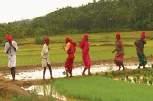
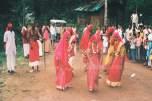
Theyyam
Theyyam
Tholpavakoothu
Tribals perfoming art Gadhika
Medhuva Dance
https://vitaratours.com/traditional-art-forms-of-kerala 13 | History and its evolution of arts and crafts in Kerala
Kambra dance
Evolution of craft
Mughal Period
Post Independence

Gupta Dynasty
p r e v a l e n c e

The art of weaving and silk spinning scored refinement. Metal works , ivory works and jewellery reached great potential. Timeline
The establishment of All India Handicrafts Board in November 1952, to look at the problems and find solutions concerning Indian Handicrafts; The handicrafts and handloom export corporation of india ltd in 1958, to promote handicrafts exports; Opening of crafts museum in 1953 in Delhi, to develop people’s interest in handmade Indian goods.
The handicraft production can be classsified into
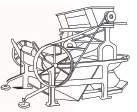

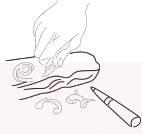
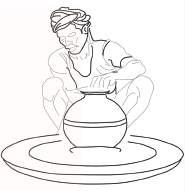
Jajmani System
Under the British rule, production of Indian Handicrafts faced a rather sharp decline. The East India Company forced a monopoly over the production of artisans from Bengal, and the price of these products were 15-40% lower than their actual market prize. products were articles of daily use
Integrated with the urban areas
artisans produced crafts mainly for the purpose of sale
Dadni System Karkhanas
the merchants advanced cash to the artisans for production
Under the colonial rule Wood craft
skilled artisans produced luxury crafts under the command of kings or high nobles.
It is mainly done in temples and churches of the state which abound in wood carvings. Furnitures like chair, table,models of animals, deitys, kathakali accessories, models of comparisoned elephants,carvings of kathakali dance dolls,etc.
Pottery
Bell metal casting

It is an old time industrial art. Images or idols of dieties made out of copper , bronze,brass are used for consecretion in temples and churches.
Evidence of pottery has been found in the early settlements of Lahuradewa and later the Indus Valley Civilisation. Today,It is a cultural art that is still practiced extensively in indian sub-continent.Until recent times all indian pottery has been earthenware, including terracotta.
History and evolution of art and craft | 14
http://www.newsgram.com/the-history-and-development-in-india
Arts in Kerala
• Kalari is formed during Kulasekhara age ( 9th Century).
• The Nairs were the traditional martial class of the land.
• The Northern Ballads are replete with references to the institution of the Kalari (Gymnasium) and the training in the use of arms (Kalaripayattu) imparted there in.
TRADITIONAL DEFENCE IN KERALA
URUMI KALARI PAYATTU
• Gadhika is one such art from practiced among the Adiya community to drive away severe illnesses and diseases, which they believe is caused due to God’s dislike/anger towards them.
• The tribal community near Mananthavady in Wayanad District called Adiyaan have great respect for their agricultural practice, which they also celebrate in their own way.

• One such celebration in the form of dance and singing at the time of planting new rice plants in the paddy fields is called 'Kambara Nritham'. Nritham means dance.

• It is a sword with a flexible, whip-like blade, originating in modern-day Kerala in the Indian subcontinent. It is thought to have existed from as early as the Sangam period ( 6th - 7th century ).
GADHIKA
TRIBAL ART FORM IN KERALA
KAMBARA NRITHAM
SCULPTURE MURAL PAINTINGS
FINE ART IN KERALA
• The development of the temple arts was accompanied by the progress of sculpture and painting.
• Stone and wooden sculptures representing Puranic themes and deities.
• Mural painting also seems to have had its origin in the Kulasekhara age ( 9th Century ).

15 |
History
and evolution of art and craft
A Survey of Kerala History by A. Sreedhara Menon
Music Tradition in Kerala
• It is made from karungali , sandalwood or the wood from the jackfruit tree.
• It is the shape of an hour glass, with the two sides similar to the damaru.
IDAYKKA
• It is a metallic musical istrument which is similar to a pair of cymbals.
• Completely made up of bronze which has two pieces.
ILATHALAM
SOPANA SANGEETHAM
• Sopana sangeetham formed from the Sanghom period to the rule of the Cheras (4AD to 10 AD)
Sopana Sangeetham
Kottipaadi Seva Ranga Sopanam
• Madhalam word is formed from Mardhalam meaning one which recieves pressure.
• The skin on the heads is fixed with a paste made of boiled broken rice and charcoal.
VEENA MADHALAM
VILLADI VADYAM
• Formed in Tamil Nadu and Kerala. It is a bow shaped string instrument .
• Made up of a long bow, bronze bells hung on it, a terra-cotta pot and sticks with jingles.
• Carnatic Music is formed in Tanjavoor during 15th -16th century AD.
• In 19th century it spread in kerala
CARNATIC MUSIC FOLK SONG
History and evolution of art and
craft | 16 keralaculture.org
Mainly figures of gods, animals, and dancers, vyali panel found in thrikkodithanam temple changanasherry 11 TH CENTURY
A sculpture made in stone is the the three which seen in the cave TEMPLE AT KAVIYOOR and ROCK CUT SCULPTURE vizhinjam


8TH CENTURY

Later stone sculptures of buddha are found from place like karumadi, mavelikara etc




The 3RD MILLENNIUM BCE, idol,of lord vishnu and ata guruvayur temple and sree padmanabha swami temple thiruvananthapuram ,STONE SCULPTURES
Later kanai kunjuram created several rare and beautiful works


Apart from temple sculpural works can seen in church. CARVED GRANITE PLATFORMS .AND BAPTHISM
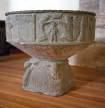
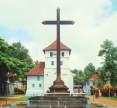

17 | History of art and craft keralaculture.org
Sculpture
A mural is any piece of artwork painted or applied directly on a wall, ceiling or other permanent surfaces.
It depicts charecters and scene from christian myhtology. The paintings of virgin mary in church in the late 18 th c
Murals of THIRUNNANDHUKKARA AND THIRUVANCHIKULAM are the earlist specimens of kerala painting. starts from the periods 9th to 12thC AD. Krisnapuram palace , has the large panel in the first half of the 18th c

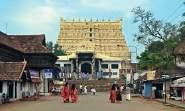

Mural seen in kerala temples belong to the periods from 15th centuary onwards





History of art and craft | 18 keralaculture.org
SRI PADMANABHA SWAMI TEMPLE depicting puranic themes for the remarkable finish ,middle of the 17th and 18th century
9th -12th c middle of 17th-18th c 15th c late 18th c
Artisan
Artisans are professionals who use their hands-on artistic skills in a particular field. They make handwoven fabrics that are unique and , leather items, ceramics, blown glass, or jewellery, to mention a few possibilities. They add finishing touches to their work using their skills in the fine arts such as painting, sketching, or engraving. Many artisans are self-employed, which means they can set their own hours. Sometimes artisans work a second job or work overtime to meet deadlines.
Job responsibilities of an artisan include:
• They make use of high level of creativity
• Selection of materials and tools
• They use skills like drawing, sculpting, and painting
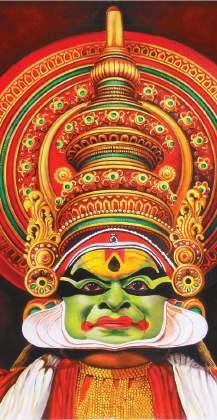
• Design and create products that are decorative & useful
• Present and display their creative work for the public
Art is a form of application and imagination, feelings, thoughts, ideas or any other human creativity, in a visual form, having aesthetic and emotional value. It involves painting, sculpture, drawing, photography, architecture, etc. It is an open-ended, form of work which is not organized; which cannot be reproduced. ‘Monalisa,’ the famous painting, made by Leonardo DA Vinci is a great example of it.
A piece of art has an intension that has the power to provoke a person’s feelings. It has a limitless expression and endless interpretation, which depends on the person.
Conclusion:
The art is done with the soul of the creator and his imagination as the base of the catalyst for the creation.

An artist pushes beyond the mere creation of an object and supplants the physical dimension with creativity and vision, the craft becomes a work of art.
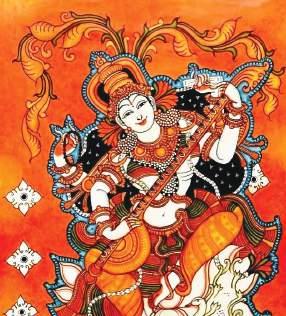
Arts
Kerala Mural Art
Kerala Mural Art
21 | Difference between Arts and Crafts https://keydifferences.com/difference-between-art-and-craft.html
Kathakali (a form of classical Indian Dance)
Craftsman
A craftsman is someone who is highly skilled in their craft. They replicate the work and create in mass consumption. Instead of producing many different unique pieces, craftsmen work to make exact similar objects. Their methods involve traditional and advanced computer equipment. They work with wood crafts, tiles, and other types of materials.
Job responsibilities of a craftsman include:
• Develop and assemble products for consumers
• Observe safety protocols
• They should have high technical skills
• Use traditional tools and advanced computer technology
• Operate mechanized equipment
Craft is an activity that involves skill and experience in the creation of handmade objects that satisfy a particular purpose. It is defined as the creation of those objects that has utility for people. The purpose can be both decorative and functional.
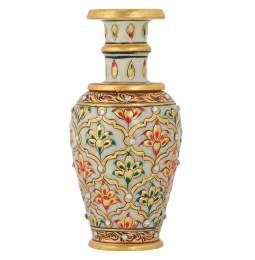
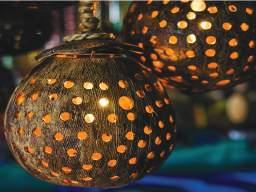
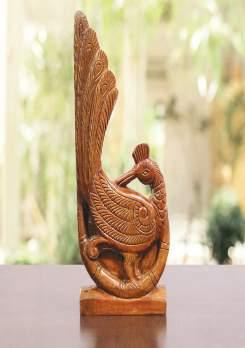
Craft is a product of the mind; that draws people in. It is a skill, which a person acquires through regular practice. It includes making things like bird houses, mats, woven basket, embroidery, blankets, handbags, candles, jewellery, pottery, glass work and so on.
Conclusion:
The craft is something you work tirelessly to get proficient with and requires years to get skilled at it.
The craft has a tangible form (like moulding, carving, etc.). It is the creation of goods of a utilitarian nature, to serve a human purpose.
Crafts
Imported Ceramic Pottery
Jute Lampshade
Difference between Arts and Crafts | 22 https://askanydifference.com/difference-between-art-and-craft-with-table
Bastar Art
Arts and Crafts
For the past centuary we have been comfortable with the phrase 'arts and crafts'. We commonly use the term 'arts' to refer to activities such as: Kathakali, Kalaripayattu, Painting, etc. and 'craft' for activities such as pottery, weaving, woodcarving etc. Although, we say Kathakali as an artform it also involves a craft. The perfomance is an art while it's costume and headgear making is a craft.
Kathakali, literally translated as "story-play," is a classical Indian dance rooted in Hindu mythology. The dance itself is performed in a makeshift open-air theater.




It's not uncommon for age-old traditions and practices to fade away over the years. But in some cases, the passage of time allows their popularity to grow Kalaripayattu, a centuries old form of martial arts practiced in Kerala, is one such example. Across the state, small and large institutions host a number of students who continue to learn Kalari.
As a ritualistic art form, Tolpava Koothu is performed during the months of January to May at the especially constructed theatre called Koothu Madam in front of the Bhagavati temple.

The "koppu”, which comprises all the ornaments used by a performer. These include the intricate headgear and accessories such as bracelets, anklets, ornate vests with its cascade of necklaces, waist ornaments and even weapons.


Kalaripayattu weapons can be broadly split into two sections, Muktham and Amuktham. Amuktham are weapons that remain in the hand and are not thrown, which includes almost all the weapons of Kolthari and Ankathari, and most of the weapons that are used today.






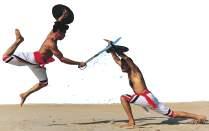
Tholpavakoothu puppets are made of deerskin. The figures are drawn on the skin, cut out and embellished with dots lines and holes, When the skin is completely dehumidified all the hair on its removed by scraping the surface with a sharp edged piece of bamboo.
 Tholpava Koothu
Kalaripayattu
Kathakali
Tholpava Koothu
Kalaripayattu
Kathakali
23 | Difference between Arts and Crafts http://tholpavakoothu.in
Arts and Crafts
This popular art form is originated in the North Malabar regions of Kerala. Theyyam unfolds great stories of the state of Kerala. Theyyam is neither performed on a stage nor any such requirements are needed. This art form is mainly considered as the Dance of Gods.
Theyyam






The headgear is heavily ornamented, but lighter in weight, as it is made from the wood of areca nut palm and bamboo. Tools like the point chisels, flat chisels, knife, files, marking tool and compass are made use for the process.
Most popular among Kerala's instrumental music forms is Chenda. In chenda, there is no difference between south and north chendas. Chenda ensemble is appreciated throughout the length and breadth of Kerala.


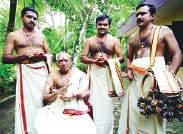
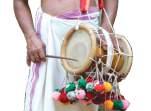


This instrument is famous for its loud and rigid sound. A Chenda has two sides, the left side called "Edamthala" and the right side Valamthala" It is made of only one/two layer of cow skin and the Valamthala" will have a five/seven layer skin.
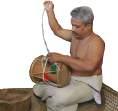


Sopana Sangeetham is a form of Indian classical music that developed in the temples of Kerala in south India in the wake of the increasing popularity of Jayadeva's Gita Govinida or Ashtapadis.
The musical instrument used was yazh which had many strings. Rogas were known by the names of native lands like Naital punn, Palai punn, Marutham punn, Kurinji punn, Mullai punn etc.
 Sopana Sangeetham
Chendamelam
Sopana Sangeetham
Chendamelam
Difference between Arts and Crafts | 24 Google Images
Definition
ARTS
It is an expression of persons imagination skills based on emotions and expressions of the artist
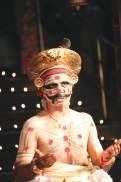

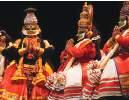




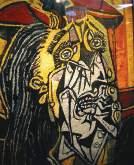

Requirement
Each art is unique and cannot be copied or reproduced as it involves the artist’s own panache


The core of an art is the expression of various emotions
A person needs virtuosity and calibre
Reproducibility Core Value
An art has an emotional value
25 | Difference between Arts and Crafts Google Images
CRAFTS
Reproducibility
Definition
It is a creative way of making handicraft items by practice and skills
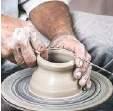
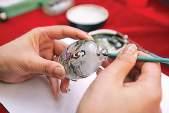
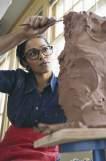





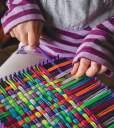

Requirement
It can easily be duplicated by another person with similar expertise and aptitude
A person with skill and talent, who has been properly trained and mastered that craft
Core Value
A craft has a creative value The core of a craft is the creative result that has been designed by hand

Difference between Arts and Crafts | 26 Google Images
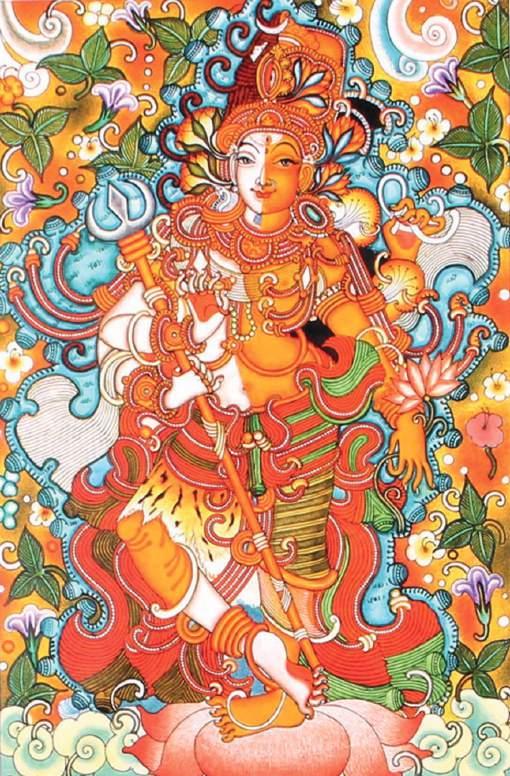
27 | DIFFERENCE BETWEEN ARTS AND CRAFTS Google Images
Art and Craft
ART CRAFT
Performing Arts
Musical Arts
Kathakali Kalaripayattu Classical Music - Chenda
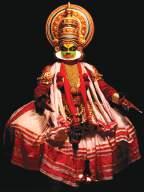
Art involves the use of imaginative skills for sculpturing, painting and architecture.
Art is a process which includes a need for creative touch and expressional way to communicate the idea of the one who is doing it.
Why is it Art?
It is art because it is an act of devotion portrayed through the expression or application of human creative skill and imagination.
Can Craft be used in part of Art?
Some components of art can be made to be a mass-produced craft items, and some individual elements are taken.
Why is it Craft?
It is made and matured through experienced and is mass produced.

Headgear
Mridangam
Craft refers to the creation of handicraft items and involves the use of various materials.
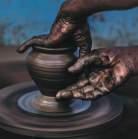






Craft has a specific structure that makes it visible with a definite form.


Craft is a process which involves the experience and skill to learn a special method to create something which might takes years to master.
Can Craft be turned to Art?
The mass-produced item can be represented in such a unique and new way that it turns into art.
If the item is mass produced due to the popularity it becomes craft.
equipments and techniques | 28 Google images
Ornaments Swords & Shields Kacha Relation between
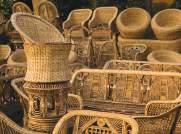
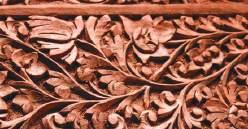


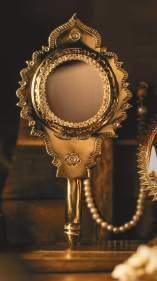
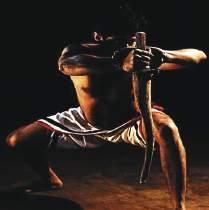
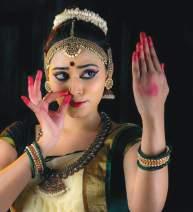
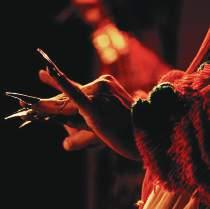
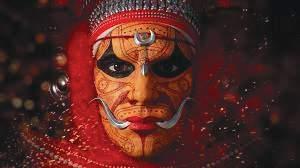
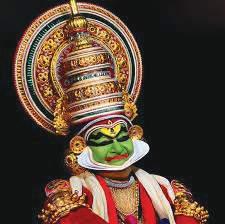
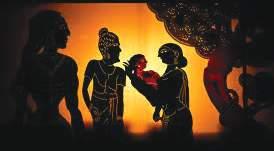

31 | Types of Art and
Handicrafts of Kerala
Crafts
What is art
Art is a highly diverse range of human activities engaged in creating visual, auditory, or performed artifacts — artworks — that express the author ’s imaginative or technical skill, and are intended to be appreciated for their beauty or emotional power Specific mediums and forms of artistic expression have changed throughout human history, but for the most part, art falls into one of the following seven classical forms. Each different form of art is experienced differently and affects our emotions and feelings.
Types of art
Kathakali Chakyar kuthu Mohiniyattom Koodiyattam Ottamthullal Mudiyett Thiruvathira Theyyam Pulikali Panchavadyam Chavittunadakom

Duffmuttu Margomkali Oppana Theyyatt Padayani Tholapavakoothu
Kalaripayattu Classical Sopana sangeetham Folk songs


Gadhika Kambra nritham Painting Sculpture Murals


Dravidyan
Inscriptions Coins Protected monuments Megalithic monuments
CRAFT
What is Craf t
The God's own country Kerala is also renowned for its rich tradition in handicrafts which is part of its cultural legacy These crafts reflect the extraordinary skills of its master crafts men.



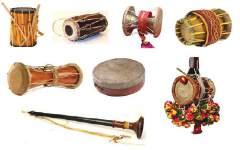







Types of Art and Crafts | 32 ART
1)Painting 2)Sculpture 3)Literature 4)Architecture
6)Music 7)Theater 8)Dance
5)Cinema
9)Photography
1) Bell Metal casting 2) Bronze Casting 3) Screw Pine Craft 4) Handlom 5) Bamboo 6) Aranmula K anadi 7) Potter y 8) Wooden Car ving 9) Pooram crafts 10) Musical instruments 11) Nettur petti 12) Vallam Mak ing
Types of art in Kerala Types of Craft in Kerala
?
Handicrafts of
Performing arts Martial arts Music Tribal artforms Fine arts Literature Archeology
Kerala
KOODIYATTOM
Four methods or types of acting : Aangikam (expression using different parts of the body) Vaachikam (expression through speech) sathvikam (expression of physical reactions to emotions) Aahaaryam (expression through costume, ornaments and props) .
They are performed in the Sanskrit language or an early form of Prakrit in koothambalam.


Conducted by: Chakkiyars (male cast) Nangiars (women of the Nambiyar caste) playing
Koodiyattam is a combined dance drama which lasts for several days ranging from 6 to 20 days. Themes are based on Hindu mythology.

CHAKYAR KOOTHU
Performed by the the members of the Chakyar community . Performed in temple theatres called Koothambalam.The entire story is presented by a single performer. The costumes are that of a court jester.
Makeup Rice powder Turmeric powder Black powder
performer wears an ornament in one ear and a betel leaf in the other.
OTTAN THULLAL
Types of this artform : Ottan thullal Seethankan thullal Parayan thullal



An accompanying artist plays the percussion instrument Mizhavu in the background.


The performer is called thullalkaran. The face of the performer is painted with green colour, red lips and black eyes. The costume include red and white coloured knee length skirt, tied around the waist and a colourful headgear.
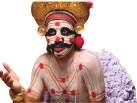
KATHAKALI
Gestures are wide and strong, the pointing of a finger being preceded by a sweep of the body and a great circling of the arms. Faces are made up to look like painted masks. The costume consists of a full skirt, a heavy jacket, numerous garlands and necklaces, and a towering headdress.
Different components/steps
Keli Arangu Keli Thodayam Vandana slokam Purappadu Melappadam Kathabhinayam
33 | Types of Art and Crafts
Trivandrum
Kollam
Pathanamthitta
Idukki
Ernakulam
Thrissur
Palakad
Malapuram
Kozhikode Wynad
Kannur
Kasargod Kottayam Alapuzha
Pacha Kathi Thadi Kari Minukku
Instruments used Make ups used Mridangam Maddalam Elathalam Instruments used Maddalam Chenda Idakka
of Kerala
Handicrafts
W ar bonnet
Breastplate
Instruments : Chenda K uzhal
Theyyam is representative of a form of Hinduism practiced by the tribal communities since time immemorial. The Satvic rituals practiced by the Namboodiri Brahmins in temples co existed with this tribal form of worship which involves liquor and meat as offerings to god. The very attractive features of theyyatam are its colorful costumes. The make up involves very accurate face painting of different styles and body decoration. The hierarchy of Gods, Goddesses, heroes, demons, spirits and other mythical beings is personified in the plays. The typical waist dress of heroes is found in Kathivanur Veeran which is made out of splices of bamboos and covered by red cloth.

THIRUVATHIRA
Thiruvathirakali or Kaikottikaliis a unique dance performed in Kerala on the auspicious day of Thiruvathira, the birthday of Lord Shiva. It is performed by women who seek blessings for eternal marital bliss. It falls in the Malayalam month of Dhanu (Decembe r- January).
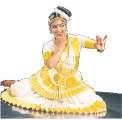
Groups of up to eight or ten women are seen dressed in traditional Kerala attire, dancing in a circle. The white saris with colourful borders along with fresh jasmines adorning their hair make for a wonderful sight. Fidelity and the power of female energy are the crux of this ancient practice.

MUDIYETTU
Instruments used
Veekku chenda (percussion and bass)
Uruttuchenda (percussion) Ilathaalam (cymbal) Chengila (cymbal)
Sequence of Mudiyettu
1. Kotti Ariyippu (Drum beat announcement)
2. Kalamezhuthu
3. Kalam Paatu
4. Chutti Kuthal (Mak e -up)

5. Vilakku Vaipu (Lighting of the stage lamp)

Instruments used
Chenda Uruttuchenda Ilathalam Chengila
MOHINIYATTOM
The Mohiniyattam Dance Dress is an off-white plain saree, embellished with a gold-laced or bright golden- colored brocade, embroidered on the borders. A matching blouse finishes the adornment. The front part of the saree has a pleated cloth, having saffron or golden colored bands, starting from the waist.
The dancer has to wear pieces of jewelry in her head, neck, ears, wrists, hai r, and fingers. Anklets making sound, i.e. ghungroos are wrapped around her ankles.
Instruments used
Kannur
Mudiyettu is a ritual art form performed to appease Goddess Kali (called Durga, in many other places) prevalent in South Kerala and Kochi and rarely in central Kerala. It is also known as Mudiyeduppu. Mudi refers to the headgear of her terror-inspiring face and her wild hai made of wood or metal.
Kozhikode Wynad
Malapuram
Palakad
Thrissur
Ernakulam
Kasargod Kottayam Alapuzha
Idukki
Pathanamthitta
Kollam
Mridangam/Madhalam
Idakka (hour glass drum) Flute Veena Kuzhitalam (cymbals).


Trivandrum
The basic dance units are known as atavus or atavukal, and these are grouped into four:
Taganam Jaganam Dhaganam
Sammisram
Types of Art and Crafts | 34 THEYYAM Handicrafts of Kerala
CHAVITTU NADAKOM
Instruments used bell drum Pada Thamber Maravaladi

Alapuzha
Chaviitu Nadakam is a Latin Christian folk art form of Kerala. It is originated in Cochin where the Latin Christian Portuguese missionaries have instituted their first mission.
Chavittu Natakam, a colourful and vigorous theatre form, is considered to be a folk art form noted for its attractive mak e -up of characters, their elaborate costumes, detailed gesture, and well - defined body movements

The important or the main characters wear dresses made of brocade and they also wear ornamental headdresses or crowns.
-
Chavittu Nadakam is usually performed on open stages. Sometimes the interior of a church is also a venue.
THOLPAVAKOOTHU
Instruments used chenda maddalam ezhupara ilathalam conch cherukuzhal.
Tholppava (Thol means leathe r, Pava means puppet) are moved with the help of strings, and their shadows are depicted on a screen with the help of a row of oil lamps in the background. The story of Tholppavakoothu performance is from the Indian epic, Ramayana. In the olden days it was performed elaborately over a period of forty- one days. The narrative used for the performance is a mixture of prose and poetry called Adalpattu.
PANCHAVADYAM
Panchavadyam is the traditional orchestra of Kerala that includes of five different instruments



Its tempo increases slowly that is coupled with a decrease in the number of beats in cycles proportionatel y. In panchavadyam several instruments are used. It permits a lot of improvisation while filling up the rhythmic beats on the first three instruments.
Instruments used Timila Maddalam Ilathalam Adakka Kombu
MARGAMKALI
Costumes used chatta mundu kavini mekka mothiram (an earring worn on the top of the earlobe) bangles on the hand and the ankle
Margam Kali is the most popular Christian art form in Kerala presented in a group mainly by women. Twelve persons, reminding the 12 Apostles, with peacock feathers in their head, stand around a traditional lamp for the performance. Traditionally performed by men, the performance begins with a Mangala Ganam (song).
Margamkali does not use any instruments other than two small palm size cymbals played by the same person who sings the son g.
Costumes for men

dhothi head gear red silk cloth
Components
Skin of deer Leather that Bamboo stick.

The puppetry is staged on a special structure in temple premises called Koothumadam.



35 | Types of Art and Crafts
Trivandrum
Kollam
Pathanamthitta
Idukki
Ernakulam
Thrissur
Palakad
Malapuram
Kozhikode
Wynad
Kannur
Kasargod
Kottayam
Handicrafts of Kerala
OPPANA
Types of Oppana Oppana chayal Oppana murukkam
Instrument used Harmonium Tamburine Tabla Ilathalam(cymbals)



Oppana is a popular form of social entertainment among the Mappila ( Kerala Muslims) community of Kerala, South India, prevalent throughout Kerala, especially in Malaba r.
It is normally performed by 15 females at least, accompanied by the local folk Muslim music, on which the females, all dressed-up, dance around the bride.

The bride dressed in all finer y, covered with gold ornaments and her palms and feet adorned with an intricately woven pattern of mylanchi (henna), sits amidst the circle of dancers. She is the chief spectator sitting on a peetam (chair), around which the singing and dancing take place.
Only the Mappilapaattu will be sung on the occasion.
PULIKALI
Pulikali is also known as Kaduvakali is a colorful recreation al folk art that is performed by trained artists to entertain people on the occasion of Onam.


On the fourth day of Onam festival, artists paint their bodies like tigers with stripes of yello w, red and black and dance to the rhythm of traditional percussion instruments. Pulikali performers enact scenes such as the tiger preying on an animal, and a tiger being hunted by a hunte r. They try to mimic real tigers by imitating their gestures, facial expressions and body language.
A striking feature of this folk art is the colorful appearance of the performers. A particular combination of tempera powder and varnish or enamel is used to make the paint.
DUFFMUTTU
Duffmuttu is a group performance popular among the Muslims of Malaba r. Duffmuttu is staged as a social event during festivals and nuptial ceremonies. The artistes beat on a shallow round percussion instrument called the Duffu. The leader of the group sings the lead, while the others form the chorus and move in circles. The songs are often tributes to martyrs, heroes and saints.
The players are usually six in numbers. They stand or sit facing each other and sing songs, swinging the body in different directions. The rhythmic beat of the palm on the duff controls the tempo of the song and the movements of the dancers.
Duff is a percussion instrument made of wood and ox skin.

PADAYANI
Padayani, also known Padeni is a traditional folk dance and a ritual art of Kerala.
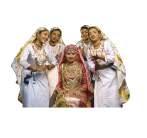
A ceremonial dance involving masks, it is an ancient ritual performed in Bhagavati temples.The dance is performed in honor of Bhadrakaali.Meanin g, a 'row of warriors', Padayani is an art form that blends all music, dance, theatre, satire, facial masks, and paintings. Though traditionall y, it lasted for nearly two weeks. Kolam thullal is the major portion of Padayani performance. Kolam is a masque made by drawing images on the leaves of the arecanut palm. Wearing this Kolam, padayani dancer performs the ritual dance in devotion.
Instruments used Thakil, Udukku Chenda.

Kannur
Kozhikode Wynad
Malapuram
Palakad
Thrissur
Ernakulam
Kasargod Kottayam Alapuzha
Kollam
Idukki
Pathanamthitta
Trivandrum
Different types of kolam:
Ganapathi Kolam
Yakshi Kolam
Pakshi Kolam
Maadan Kolam
Kaalan Kolam
Costumes: Mask Mundu
Tender coconut leaves ornaments

Types of Art and Crafts | 36
Handicrafts of Kerala
TRADITIONAL DEFENCE
KALARIPAYATT
Kalaripayattu, also known simply as Kalari, is an Indian martial art that originated in modern-day Kerala.
Kalaripayattu is known for its long standing history within Indian martial arts.It is believed to be the oldest surviving martial art in India, with a history spanning over 3,000 years.
The mother of all martial arts are classified into various stages and types based on the level and kinds of equipments used.
Otta and Urumi are specified just to Kalari.
Valum parijaim was the traditional set of weapons used in the battlefield. The main fighting form used for valum parijaim is puliyangam.
A famously lethal weapon, the urumi is one of the most deadly of the Ankathari Both sides of the urumi are sharp, the metal is thin, strong and pliant, and the length is normally the same height as a human
The Otta is long and curved with a handle at one end and a small club at the other

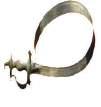
The weapon also includes marma attack, meaning it attacks certain vital points on the body to overcome the enemy

37 | Types of Art and Crafts
Urumi
V alum P arijaim
Otta K alari
Names Describtion Weapons
Handicrafts of Kerala
TYPES OF KALARIPAYATT
TRIBAL AR TFORMS
It is an art from practised among the Adiya community of Wayanad district. It is a kind of dance and there are two variations of Gadhika called Naattu Gadhika and Pooja Gadhika.
Meduva Kali
Meduva Kali is the tribal art form performed by both men and women and it is part of any wedding ceremony in the community. Local percussions like drums accompany the dance and the performers move in small circles rhythmically with the music instruments.

Gadhika Kambra Nritham
Kambara Dance is another folk dance that is common among Adiya community of Wayanad district.
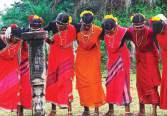
Men sing folk songs, play wind and percussion instruments including traditional drum in order to make the dance more exhilarating. They will sing and dance around the paddy fields while the women collect new saplings from the field.
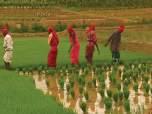
Attappadi Folk Music
According to Attappadi’s popular folk music expert Pazhaniswami, this tribal drum is not part of the region’s traditional musical identity. In fact, he has been making constant efforts, through an art forum called Azad Kala Samithy, to revive Attappadi’s folk music.

Types of Art and Crafts | 38
Trivandrum Kollam Pathanamthitta Idukki Ernakulam Thrissur Palakad Malapuram Kozhikode Wayanad Kannur Kasargod Kottayam Alapuzha
Handicrafts of Kerala
Music Classical Music


Classical music is another name given to hindustani music.
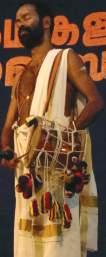
 Udukku
Udukku
Sopana Sangeetham is a form of Indian classical music that developed in the temples of Kerala in south India in the wake of the increasing popularity of Jayadeva's Gita Govinda or Ashtapadis
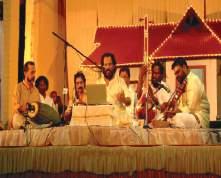 Dolak Mizhav
Dolak Mizhav
Carnatic

The music of Kerala has a long and rich history. It is not the same as Malayalam poetry, although most of it is poetry driven. Kerala has a rich tradition in Carnatic music. Songs formed a major part of early Malayalam literature, which traces its origin to the 9th century CE
Folk Songs
It is more of a part, of the folk culture that refers to the non-formal, traditional or indigenous languages, customs, rituals, mannerisms, performing and non performing arts of a group of people, mostly bound together by race, ethnicity, region or conditions.
39 | Types of Art and Crafts Handicrafts of Kerala
The ancient paintings of Kerala had its origins in cave paintings and carvings. The ancient wall paintings are mainly seen in places of worship such as temples. Kalamezhuthu, a ritual art in which the pictures of Gods and Goddesses are drawn on the floor using coloured powders, is another system of painting prevalent in Kerala. Modern painting styles were introduced through the paintings of Raja Ravi Varma.Kerala is also known for its unique mural and sculpture styles.
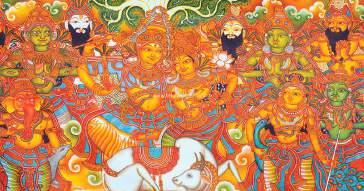

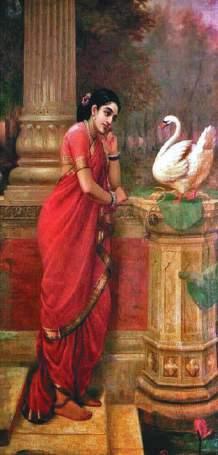
Sculptures

Fine Arts
Murals
Paintings Kalamezhuthu
Types of Art and Crafts | 40 Handicrafts of Kerala














Handicrafts of Kerala 41 | Types of Art and Crafts M at e r ials Craf ts Brass /Copper / Tin 1 ) Bell Metal casting 2 ) Bronze Casting 1) Thiruvananthapuram 2) Thrissur 3) Ernakulam 4 ) Kannur -Pyannur 5 ) Kasargod Screw Pine Craft 1 ) Thazhapaya 2 ) Methapaya 3 ) Fishing Nets 4 ) Hut Coverings 5 ) Bags 1 ) Thrissur 2 ) Malapuram 1 ) Coir works 2) Coconut stem Tables and chairs a) Coir yarn b) Mats c) Mattings 3) Coconut Husk 4)Coconut Shell Cups, Bowls, snuff boxes 1) Alapuzha 2) Kottayam 3) Ernakulam 4) Kozhikode 5)Thiruvananthapuram Handloom 1 ) Balaramapuram textiles 2) Chendamangalam 1 ) Thiruvananthapuram 2) Kannur 3) Kozhikode 4) Palakkad 5) Ernakulam 6) Thrissur 7)Kasargode 4)Kasavu, double dhoti 3)Kuthampully textiles Production Cluster Coconut craft
Bamboo

Production Cluster Pottery
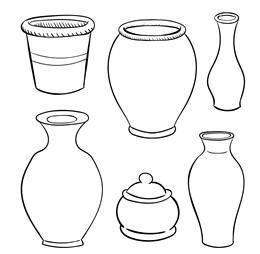
Wooden Carving

Crafts
1) Kasargod 2) Alapuzha
Types of Art and Crafts | 42 Handicrafts of Kerala




01
1) Malapuram 2) Kozhikode 3) Wayanad Materials
Aranmula Kanadi
1) Pathanamthitta - Aranmula
1) Ernakulam 2) Wayanad 3) Thiruvananthapuram
Legend
Bamboo
Aranmula K anadi
Potter y
Wooden Car ving
A wide variety of products made in bamboo are, floor mats, beach mats, table mats, table runners, coasters, curtains, furniture, shoulder bags, purses, coin, jewelry, magazine holders, cutlery trays, fruit trays, boxes, bins, baskets, lamps, table watches, masks etc.
Aranmula Kanadi
The Aranmula Kannadi is said to have originated at the sacred Aranmula Parthasarathy Temple and has a great legend behind it.
The mirror is considered auspicious and a symbol of good luck.

Made out of several rare metals and imbued with the locals skills and creativity



Pottery

Kerala is known for its heritage of pottery. The way the traditional artisans of Kerala mould clay to make beautiful pots and other household utensils will certainly surprise everyone


Wooden Carving



The woodcarvers of Kerala are skillful in making and carving statues of various shapes and sizes. This is a traditional art inherited from their earlier generations. They use the template only for outlining and the remainder is done from memor y
 Trivandrum
Kollam
Pathanamthitta
Idukki
Ernakulam
Thrissur
Palakad
Malapuram
Kozhikode
Wayanad
Kannur
Kasargod Kottayam
Alapuzha
Trivandrum
Kollam
Pathanamthitta
Idukki
Ernakulam
Thrissur
Palakad
Malapuram
Kozhikode
Wayanad
Kannur
Kasargod Kottayam
Alapuzha
Bamboo Craft
Handicrafts of Kerala 43 | Types of Art and Crafts
Legend Brass/ Copper/ Tin
Screw Pine Craft Coconut Craft Handloom


The famed bell metal craft of Payyanur is an example of how traditional crafts are sustained through local practices and demand.
Screw Pine
The screw pine is a flowering plant. It grows side by rivers and streams, It helps to protect the water bodies and prevent soil erosion.

Screw pine is a core natural resource of Trissur


Coconut Craft
Coir Crafts


The people living by the side of the backwaters of Alappuzha and Kollam districts coir making is their primary occupation.
Coconut Shell crafts

Coconut shell products include Coconut shell jewelry Coconut shell lamp shade Coconut shell bags Coconut shell pen stand Coconut shell paintings
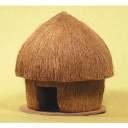
Handloom
Kerala handloom products have roots in specific locales. Each such centre of weaving has its signature characteristics that give each of them a stamp of uniqueness.
Kuthampully (Thrisshur), Balaramapuramand Chenda mangalam (Ernakulam) are the three major weaving centres in the State.


Types of Art and Crafts | 44 Handicrafts of Kerala
Clay mould of for casting
Screw pine tree Process
Waiting to be poilished Finishing Touch
Tools used for bell metal casting
Trivandrum
Kollam
Pathanamthitta
Idukki
Ernakulam
Thrissur
Palakad
Malapuram
Kozhikode Wayanad
Kannur
Kasargod Kottayam Alapuzha
Bell Metal Casting
Kannur - Payyanur
Kannur - Nettur

Pathanamthitta -Aranmula




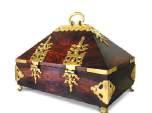

Alapuzha -Kuttanad
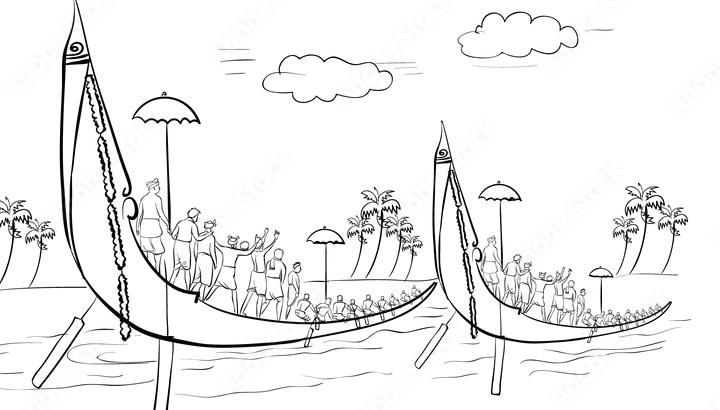
Kottayam - Champakara
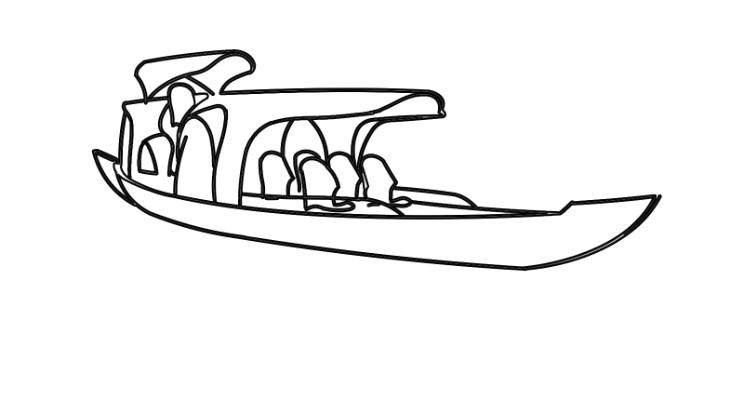
Handicrafts of Kerala 45 | Types of Art and Crafts
Pooram Crafts
2)
1)
1)
1)T
1)Timila 1)
2)
1)
1)
2)
3)
2)
Materials Production
Musical Instruments
Nettur Petti
Vallam Making 1) Thrissur -Kunnamkulam district
Dholak
Nettipattam
abala
Idak k a
Aalavattam
Palak k ad
1)
Thiruvananthapuram Crafts
Cluster
Legend
Pooram crafts Musical Instruments
Nettur Petti
Vallam mak ing
Pooram crafts
The Thrissur Pooram is a daylong event held at the Vaddakunathan Temple that culminates in a proces sion of richly caparisoned elephants.
The traditional koda or umbrella embellished with lace, embroidery and metal tassels and Nettipattam, a ceremonial forehead ornament worn by elephants. The nettipattam is constructed of embossed copper pieces that are stitched onto a blanket of the desired shape and size.

Musical Instruments
Idakka is considered the most revered percussion instrument in Kerala is known as Deva Vadyam. It is used in the temple rituals, usually performed during the daily pujas or as an accompaniment to Sopanam music.
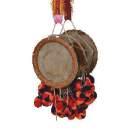
Nettur Petti
The NetturPetti is an artifact of historical significance. It was jewel box used by women in the royal and aristocratic families as well as in temples to store the ornaments of the idol. This petti (box) is named after Nettur, the village in Kerala .
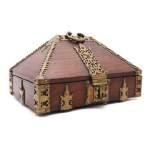
Vallam Making -Snake Boat Making
The race of Chundan Vallom boat) is the chief event hence Vallom Kalli
The boat is made of Anjali wood; the wood is cut and transported to the location where it is constructed.
The processes follow from the Vedas of building boats. The boats are more than a 100ft in length with a rear portion rising to a height of about 20ft.

Types of Art and Crafts | 46 Handicrafts of Kerala
Trivandrum
Kollam
Pathanamthitta
Idukki
Ernakulam
Thrissur
Palakad
Malapuram
Kozhikode Waynad
Kannur
Kasargod Kottayam Alapuzha
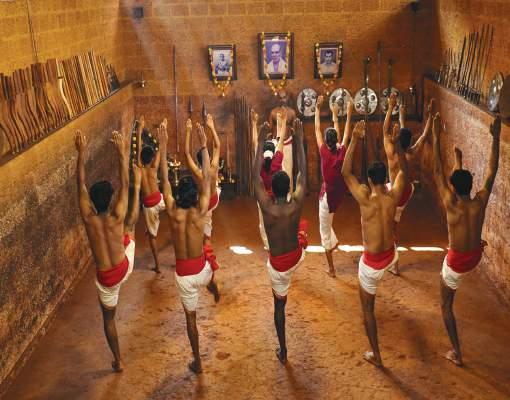

49 | Equipments and techniques in Arts https://medium.com/@Kalpavrik
Kalaripayattu
Introduction
kalaripayattu is the martial art form of kerala in which kalaripayattu’s influence can be seen in most of the art forms of kerala.
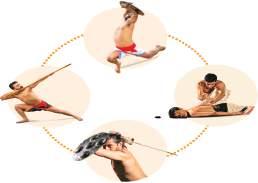
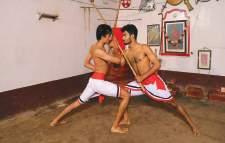

in the past kalaris (combat arena or battle field) formed as an integral part of the lives of the people. without any gender discrimination boys and girls in their childhood would be sent to the kalaris for practicing with social life undergoing changes, the position of kalaris and their influence changed.
Techniques
Kolthari
Image description
kolthari is practised by using short stick called muchan. It is used for fast attacks and defense. Speed is very important in this items.200 Blows per minute may be excharged during a muchan hight
Kettu kaari
Kettu kaari comes at the second stage after kolthari practised with a longer stick normally made of bamboo. The rotational force produced by this weponmakes it formidable and its length provides a safer distance from the opponent both sides of sticks are used equally
Otta
One of the most unusual wepon of kalaripayattu. Otta is basically a long curved wepon with a handle at one end and a small club ath the other. Otta is used in the elephant fighting form this wepon includes marma attack.
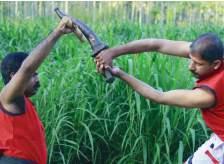
Kathi
the first metal wepons to be thought are the kathi. Knives are used once in each hand. Many types of knives exist some of commonly used knives are kaimarkathi, irettakathi both of which are used at kadathanadan kalari.


kathgiyum thalayum
the thala is a piece of cloth traditionally worn in kerala usually as a belt but along slung over the shulders or on the head it was used in ancient times until about 100 years ago. The thala is mainly used knife and bareanded combact and its effective for blocking
Equipments and techniques in Arts | 50 https://medium.com/@Kalpavrik
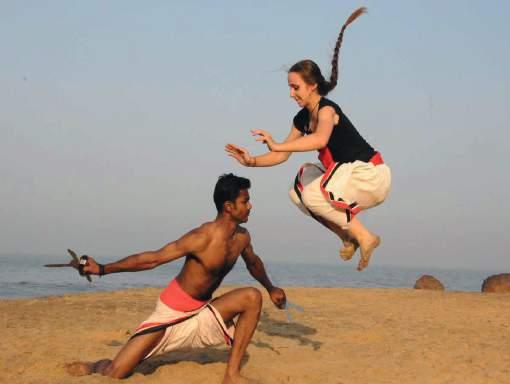
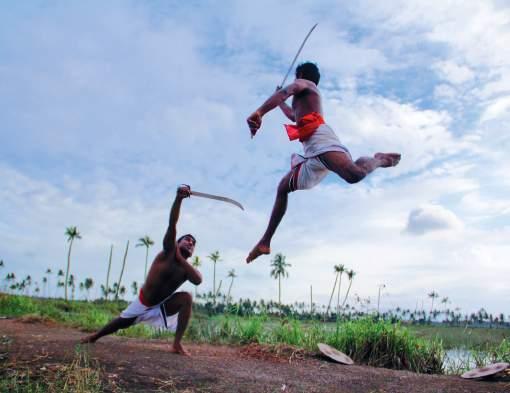
51 | Equipments and techniques in Arts https://medium.com/@Kalpavrik
Dagger(kadaara)

Kadara is only used for one-handed fighting Length is normally six angulam, or finger-lengths. Kathi and kadara are taught as necessary precursors before Verumkai (bare handed fighting) can be learnt. It includes different types of blocks, locks, grappling, jumps, dives and throws. As a very small weapon, the fighter needs to be very close to the enemy, and this requires attention, physical strength and agility
-
Sward and shield(Valum parijayum)
Valum parijaim was the traditional set of weapons used in the battlefield. The best length for the val is 40 angulam, approximately 70cm/2½ feet. The main fighting form used for valum parijaim is puliyangam, or large cat form. Puliyangam is a combination of different types of sword swings and attacks, and defence with the shield, an imita tion of the attack method of the puli. Practice of this weapon trains the fighter to become used to the sound of metal weapons clashing, and they will lose their fear and reaction to these sounds.
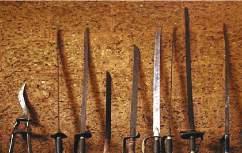
Urumi (long flexible sword)
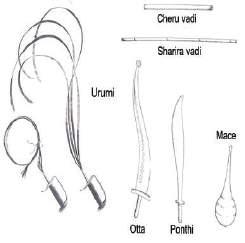
A famously lethal weapon, the urumi is one of the most deadly of the Ankathari. Both sides of the urumi are sharp, the metal is thin, strong and pliant, and the length is normally the same height as a human (the Gurukkal is normally used for height when making). Because of the flexible nature and long length of this weapon, it has great range and agility, and in the hands of an expert, it is said to be able to slice an enemy into seven pieces.
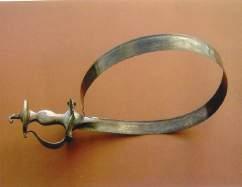
-

Equipments and techniques in Arts | 52 https://medium.com/@Kalpavrik
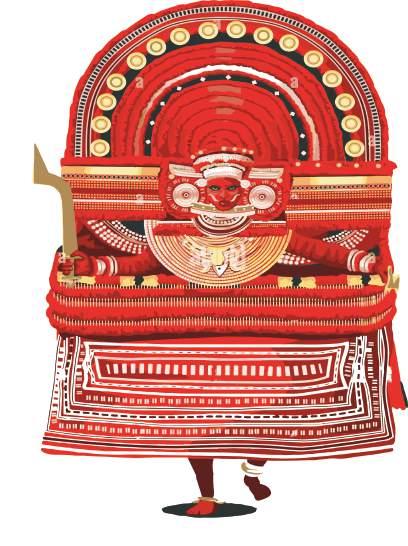
53 | equipments and techniques tyndisheritage.com
Theyyam
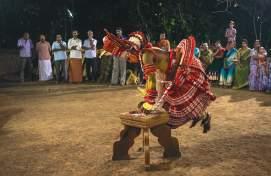
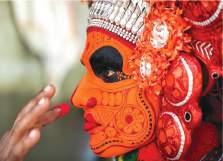
Introduction
Theyyam is a sacred ritual art form that dates back to at least 1,500 years and is usually performed before the village shrine, groves, and in some joint-family houses as ancestor-worship with elaborate rites and rituals. The word Theyyam literally means ‘God‘ and hence the Theyyam dance is known as the ‘Dance of Gods‘. This unique dance form is a synthesis of ritual, dance, vocal and instrumental music, painting, sculpture and also literature.
Equipments
The main instruments used for Theyyam performance are Chenda, Veekan Chenda, Ilathalam and Kuzhal. Apart from these, Perumbara, Counch, Utukku , Chermangalam and Cherututi, are well known musical instruments used in Theyyatam. For performing Vellattam, the performer's face of the performer is painted and he has a tuft of hair on his head.The instruments are played in accordance with the steps of the dancer.


The rhythm of the playing of these instruments varies from Theyyam to Theyyam. The continuous playing with measured interludes helps to make the performance very impressive. According to the rhythm of the instruments, the same instrumental players recite ‘Theyya Thotams’ also for the theyyam deity. There is no stage or curtain or other such arrangements for the performance. In short, it is an open theatre.
Techniques
Theyyam performance is carried out in two different parts. The first part of the Theyyam performance is known as Vellattam, also known as Thottampattu. It is performed in a light manner without any elaborate costume and the performer narrates the origin and characteristics of different Theyyams. It is performed with only a small red headdress and no proper make-up or any decorative costume is used during this occasion. Then the dancers are accompanied by drummers and they recite a particular ritual song, which describes the myths and legends of how the deity of the shrine came to be honored. The dancer returns to the green room, after finishing this primary ritualistic part of the chant.
After a short interval, the dancer makes a ritual entrance into the shrine with elaborate costumes and makeup. Then he is seated before the shrine and the headdress, which is the most sacred part of the costume, is put on and he gradually transforms into the particular deity of the shrine. Until the headdress is removed, he is considered as divine. The Theyyam runs all around the shrine and its courtyard,dancing and performing rituals and blessing the devotees. At last, the dancer distributes turmeric powder as a symbol of blessing.The rustic singing and agile and light body movements with music makes the performance fascinating.
equipments and techniques | 54 tyndisheritage.com
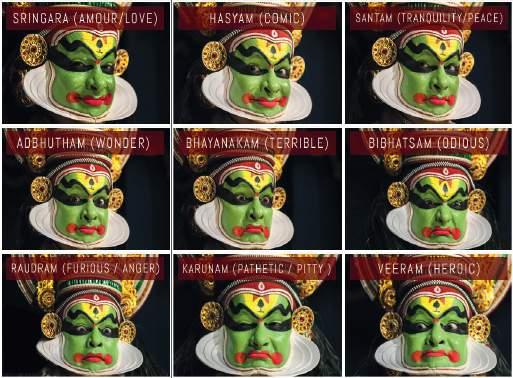

55 | Art and Craft in Kerala pearlkathakali.blogspot.com
KATHAKALI

INTRODUCTION
Kathakali is a major performing art in kerala Which at first only included males. This art is mainly utilised to convey stories to the audience through dance and facial expressions
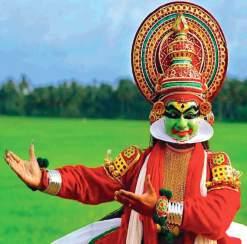
Stories at first included only the indian mythologies, but later on adapted to the western Shakesphere stories as well traditionally there are 101 classical stories written only for kathakali which is said to last for the whole night The narration of these stories is through a song in Manipravalam language
EQUIPMENTS
Kathakali is in need of large amount of equipments starting from the makeup (Theppu and chutti) to the instruments required for the soothing narration of the story , The colours used in the face are derived from the naturally available materials , for white they mix lime and rice flour ,blue taken out from neelamari plant or Indigo coconut oil is used as the base for these
After makeup is done the other major work is the heavy costume which requires more than 2 professional to dress up a character
Major accessories and
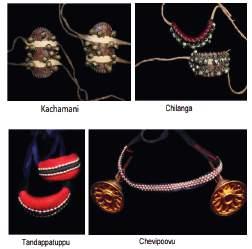
that are required
TECHNIQUES
It takes a lifetime of meditation and perseverance to master the technique of kadhakali, kadhakali uses both body and facial expression to convey the message to the audience, hence the muscles plays an important role in kadhakali
Body techniques : Initially the dancer stands in a geometrical postion of rectangle with feets apart and knees turned out and the outer sole of the feet touching the ground this form is identified as the mandala sthana , the kadhakali arstist also travels stage in patterns of square and rectangle
The right foot meets the left and one side of the square. The dancer moves forward to the third corner of the rectangle and then back to the second corner and finally comes back to the first corner but only touching all four points. With his arms and hands, the dancer covers space usually in figures of squares and rectangles or clearly drawn diagonals along these squares and rectangles. Occasionally the hands execute figures of eight and the eyes follow
Facial techniques : The facial expression plays a very important role in conveying the emotion of the kathakali script, there are mainly 9 important facial expressions in kadhakali as called as navarasa depicted each emotion through eyebrows and eyes
costumes
are : Male Female •chevippuvu •strivesham •chamaram •katila •thalekketuval •kurunira •thoda •mookuthi
Art and Craft in Kerala | 56 www.webindia123.com
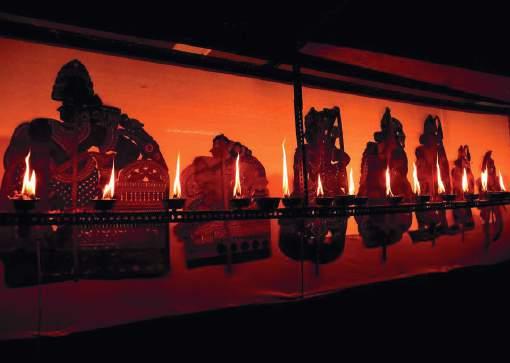
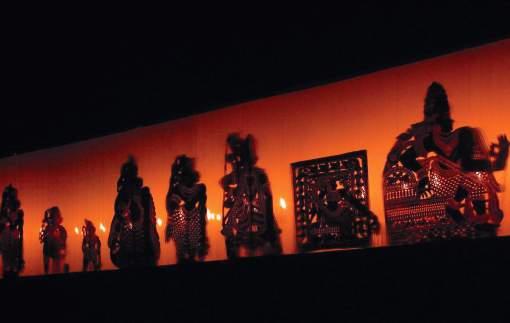

57 | equipments and techniques Tholpavakooth.in
Tholpavakoothu

Introduction Equipments
Tholpavakoothu is a form of traditional puppetry of Kerala that originated in the Bhagavathi (goddess) temples of Palakkad district. This ritual art form is interwoven into the rural life of Kerala. Tholpavakoothu demands a keen understanding of the scriptures, efficient delivery, crisp diction, and precise puppet manipulation. It is usually performed in Bhagavathi temples as an offering to please the goddess. ‘Tol’ means leather, ‘Pava’ means puppet and ‘Koothu’ means to play. It takes stories from the epic Ramayana, and is enacted in 21 parts. During the course of the rendition, the performers provide live explanations and interpretations of the verses.
A number of instruments are used in tholpavakoothu which includes Ezhupara, Chenda and Maddalam, Chengila and Kurum Kuzhal. Tholppavas are made of the skin of deer and the puppet forms are made by making small holes in the leather that is then attached vertically to a bamboo stick. The animal leather is cleaned, dried, flat and cut in the shape of Human, Bovine or Aquatic characters depicted in the story.

Accompanying instruments include Ezhupara, Chenda, Maddalam, Chengila and Kurum Kuzhal. Ezhupara, a cylindrical drum made out of jack-fruit wood and covered with calf-skin on both ends and Ilathalam (cymbals) are the main accompaniments. Shankha (conch), Chenda and Maddalam (drums), Chengila (gong) and Kurum-kuzhal (a short pipe) are further instruments to be used on special occasions. The artists have to undergo several years of rigorous training to master this art form. Each puppet is of an average height of 80 cm and is cut out in different postures. The puppets are arranged behind a long white curtain stretched across the Koothumadom. Behind this, on a split bamboo pole, is placed a row of wick lamps burning inside coconut halves. The light from these lamps cast the silhouettes of the puppets on the curtain. The chief puppeteer is known as ‘Pulavan’.
Techniques
Tholpavakoothu is a unique tradition of shadow puppet theatre from central kerala. As it is a shadow play, lighting techniques are incorporated. Suitable holes are made in the puppet for light effects from behind. Then a white cloth about 20 feet long is fixed tightly without wrinkles as the screen. Below this, a black cloth about 40 feet is also fitted tightly.The screen is illuminated by 21 lighted lamps, made out of coconuts cut in half, filled with coconut oil, provided with cotton wicks and placed equidistant from each other on the Vilakku-madam behind the curtain. An areca nut tree log is fixed horizontally in the required height behind the white screen. Depression is made in this log where coconut broken pieces with oil and cloth wicks are kept ready to be lightened. This is done in the stage made for the show called koothu madam.There are specific dimensions for all these equipment.The white cloth depicts earth and heaven and the black,pathalam the abode of Demons.
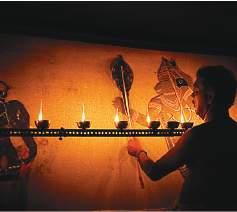
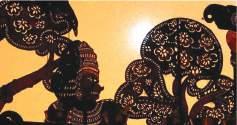
equipments and techniques | 58 Tholpavakooth.in
Crown
Glittering costumes with stones embedded on it
Glittering cape
Glittering pants
High ankle boots
59 | Equipments and techniques www.keralatourism.org
Chavitt Nadakam
Chavittu Natakam is a blend of music, dance, acting, dialogue delivery, and rhythm and its pet themes are Christ, saints and the history of kings. A stage would be set up using wooden planks. The play picks up to the rhythm of Pada Thamber and Maravaladi, both percussion instruments, and also on the basis of a script laced with valour. The story develops through a song. The tempo rises steadily to a frenetic pitch through various stages like Varna Mattukal
Since the characters were mostly European kings, their costumes were very colourful with a crown, sceptre, ornaments, warriors bearing weapons and shield etc. They resembled the Greek and Roman attire. Artists sing as they enter the stage and it would be followed by the chorus. The steps punctuated by the rhythm of the music are known as Chuvadu. The dance and steps of such plays could be performed only by those skilled in martial arts. The artist has to move his body, face, and especially eyes to the rhythm and music
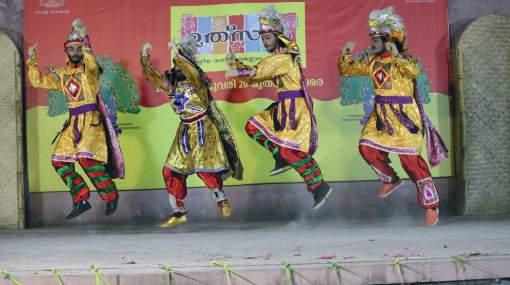
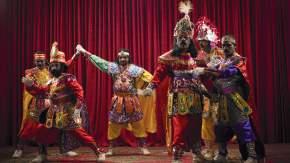
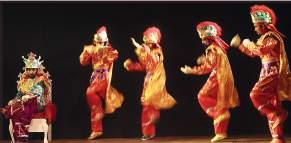
Above, is the different kinds of crowns and boots used during the perfromace of chavitt nadakam.
Right, Different performance acts of chavitt nadakam.

Equipments and techniques | 60 www.keralatourism.com
Kunuk Bangle Chattah Mund Kolus
61 | Equipments and techniques www.keralatourism.com
Margam Kali
The ritual is commonly performed by christian community .Which is one of the important performed arts over many years. This performed art has similarity to hindhu culture {for example similarity to thulasithara}. Which is one of the main art in hindhu in an elevated platform were basil is planted, where in christian ritual is a cross in the centre. In christian ritual the dancers sing and dance around the lamp. Usually margam kali is performed by 12 persons in which each of the 12 persons respresent 12 disiples of christ. This ritual is commonly performed by women but it is also performed by men occasionally.

Men: Their is no special attire for men. They wear a cloth around their head and wear mund which is traditionally worn by malayali men. They also wear a red band aroud their waist. In the modernized mundu, we have gloden border which is commonly known as kasav. The cloth tied on the head have a knot and tail using kavani which is a piece of cloth smaller than mund with a golden border.
Women: Women wear kacha muri which is actually shorter than mund, that is three and half meters long and chatta which is upper wear traditionally worn by women.

equipments and techniques | 62 www.keralatourism.com
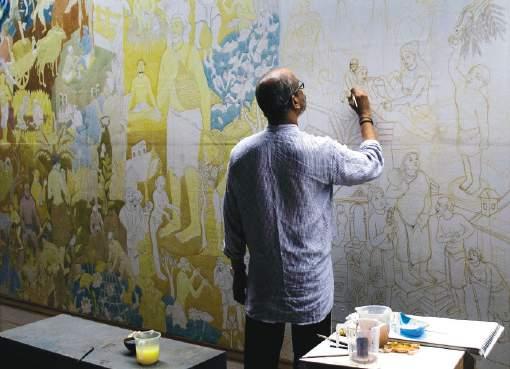
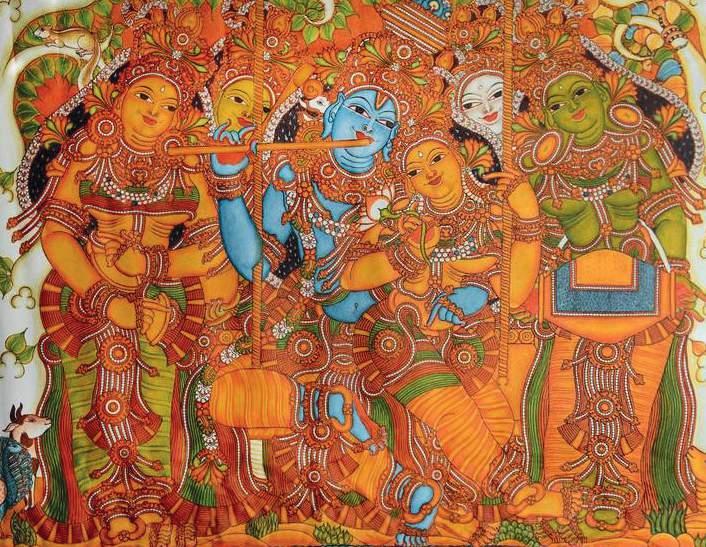
63 | Equipments and techniques in Arts https://en.wikipedia.org/wiki/Kerala_mural_painting
Mural painting
Introduction
The mural painting is any piece of artwork painted or applied directly on a wall, ceiling or other permanent surfaces. A distinguishing characteristic of mural painting is that the architectural elements of the given space are harmoniously incorporated into the picture. Kerala mural paintings are the Hindu mythology in Kerala. Ancient temples and palaces in Kerala, [[India], display an abounding tradition of mural paintings mostly between the 9th to 12th centuries CE when this form of art enjoyed patronage.

royal
Techniques
Pencil preperation
In traditional times a pencil named kithalekhini was used which was prepared by grinding of black stone and mixing with cow dung.
Brush preperation
the brush used in traditionaly was made of elephant grass which was dipped in milkand water for smoothening
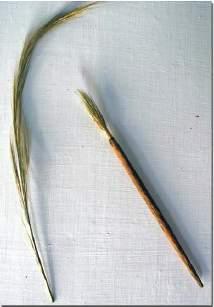
Wall preparation
Preparing a wall involves three stages of plastering the wall with different substances.
Plaster of a mixture of lime and clean sand in the ratio
Plaster of a mixture of lime and sand in the ratio 1:2, and cotton (Gossypium herbaceum). Cotton is used to give a gleaming white texture to the wall. 25-30 washes of a mixture of quick lime and the juice of very tender coconut.
Colour preparation
Traditional murals used panchavarana (Sanskrit: five colours) exclusively red, yellow, green, black and white,white being the colour of the wall itself Colours are prepared from vegetable and mineral pigments. Red is derived from red laterite, yellow is derived from yellow laterite, white from lime, and black from oil-lamp soot. Leaves of Neelamari plant are squeezed and the extract is used after drying up to be mixed with Eravikkara for obtaining the green pigment. Wooden utensils are used for mixing the colours and the binding media used is derived from tender coconut water and extracts from the Neem tree
mordenisation has influenced mural painting widely in early times murals was done in cultural or relegious places but now this are transferd to canvas, playwood and even in pots as deco rational purpose for ease of transportation and all the use of natural colour pigments was also reduced because preperation of natural colours in now a days are tme consuming and wide verity of colours are available in market
Equipments and techniques in Arts | 64 https://en.wikipedia.org/wiki/Kerala_mural_painting
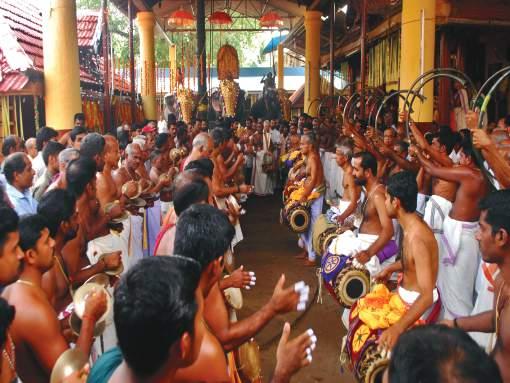
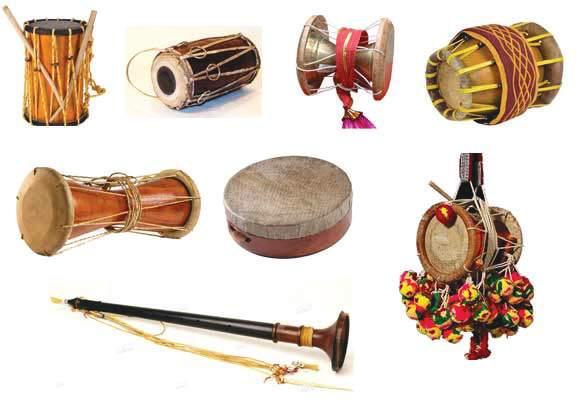
65 | Equipments and techniques in Arts https://www.kerala.com/pages/kerala-murals
Panchavadyam
Introduction
Panchavadyam literally meaning an orchestra of five instruments, is basically a temple art form that has evolved in Kerala. Of the five instruments, four timila, maddalam, ilathalam and idakka belong to the percussion category, while the fifth, kombu, is a wind instrument.
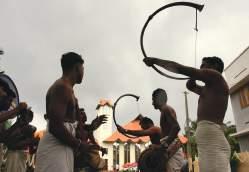
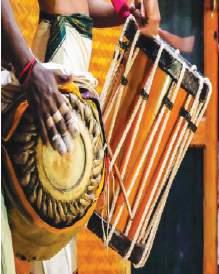
Equipments

Thimila
.
Timila body structure resembles that of a fish.It is a glass shaped percussion instrument made of polished jackwood with length of 2 feet and diameter of 5 inches at the mouth. It is suspended on the shoulder and playing is done with both palms.

.
Maddalam
This is a drum made out of jackfruit tree played on both sides.The shape of Maddalam is just like that of a Mridangam. It is tied round the waist for playing and kept in horizontal position and played with both hands.
Ilathalam
.This is a mettalic instrument resembling cymbals made of bronze and used in pairs. It is about 7 inches in diameter and has a hemispherical depression in the middle. A string is entered through the hole provided in the centre.The other end of the string is tied to a knot to avoid slipping off The player holds one disc each in both the hands and plays by clinging them together Thus a resonance is generated.

Idakha
This is also a glass shaped drum similar to the damaru. While damaru is played with extension fields on chords connected to it, Idakkh is played with a stick. It is never kept in the ground and always hung preferably on the left shoulder by means of a strap..
or a large
Kombu
This is a wind instrument of arc shape and is a kind of trumpet. Kombu in Malayalam means a horn. Hence it is in the shape of a horn modified in an arc structure. It is thus C shaped made out of bell metal. Since there are no holes or stops in the Kombu for producing various notes, it is used as a Laya vadya. For playing a Kombu, the lips have to be kept rounded to blow properly First it starts with normal blowing and then it is tuned


Equipments and techniques in Arts | 66 https://www.kerala.com/pages/kerala-murals
Thimila
Ma dd a l a m
ilathalam
Idakha
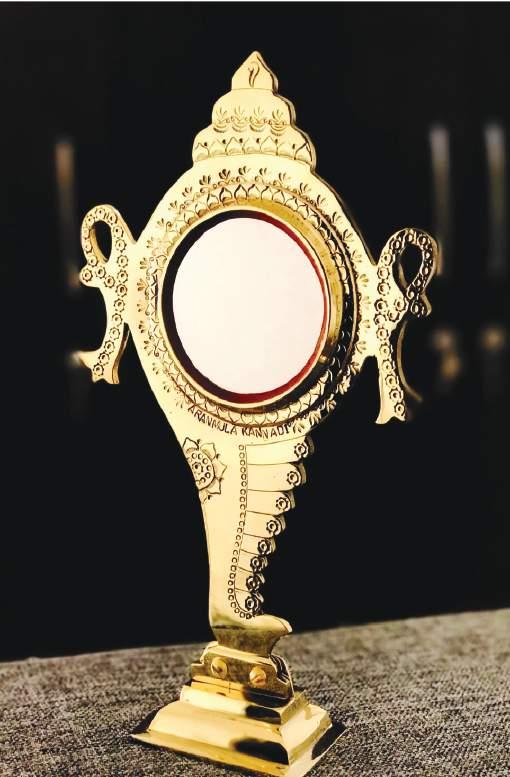
69 | Equipment’s
www.dsource.in
and Techniques involved in Different Types of Crafts
•Fine soil is powdered and refined.
•Soil is mixed with water.
•And it is kneaded thoroughly for the required consistency.

•Clay is further put into hollow frames.
•Leveled flat slabs are made using the frames and then the frames are removed.

•These flat slabs are further dried and baked to make it hard.
•On one side of the slab, coal is applied.
•Small clamps are stuck in three sides and on the top side small piece of wax protruding outside the slab is placed.

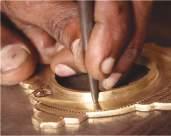

•Upon this the other slab is placed and space is made in-between them by the wax piece.
•Further these baked slabs are packed with layers of clay.
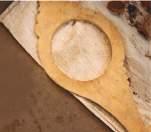
•At the place of the wax a cup made out of clay is stuck onto the clay mould.


•Two holes are made.
•Then the mould is allowed to dry.
•The clay cup is further filled with metal alloy chunks.
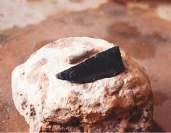
•A wet paper or cloth is covered over the clay cup.

•Clay is packed over the cup and allowed to dry.
•Once the mould is completely dried, it is kept in furnace for casting process.
•After the required heat is obtained, mould is taken out from the furnace and the clay cup and sealing are broken.
•Slabs are separated and the metal cast is removed carefully.
•Metal cast is marked and cut into desired size.
•A knife is heated to melt the wax in the further process.
•On a rectangular wooden block wax is spread and melted on it using the heated knife.

•Further the heated metal is mounted on the wax.
•Mounted metal is further allowed to cool.
•Later the metal is rubbed and polished with various materials to gain the mirror look.
•Brass ring is used for fixing the mirror to the frame.
•Further the metal mirror is fixed to the brass frame and hammered.
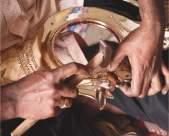
| 70 www.dsource.in
Equipment’s and Techniques involved in Different Types of Crafts
Aranmula kannadi
Equipment: Hollow frames
Technique
Equipment: Wax and coal
Metal frame
Technique Techinique
Chisles
Technique Hammer
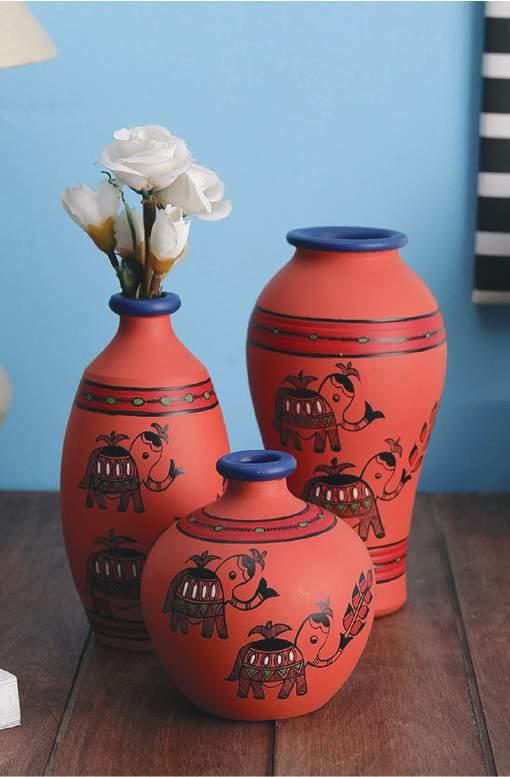
71 | Equipment’s
www.dsource.in
and Techniques involved in Different Types of Crafts
•Clay is the main raw material used for pottery which is soaked in water before mixing.
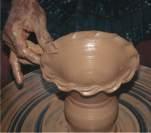
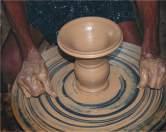
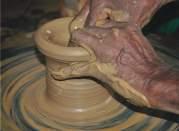
•The mixed clay is put in the clay mixing machine called pig mill.

•Mixing machine finely mixes the clay removing the lumps and air bubbles.
•Mixed clay is withdrawn from the machine with a smooth texture and it is stored in room temperature.
•Craftsman collects the finely mixed clay to make pots.
•The clay is wedging the clay and makes a solid clay ball before putting it on the potter’s wheel.
•Clay is placed or thrown on the center of electric motor based potter’s wheel that is called wheel head.
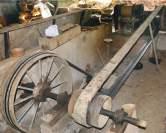
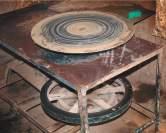
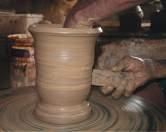
•The clay is pressed, squeezed and pulled gently upwards and outwards into a hollow shape.
•Pressure is applied in the center of the clay to acquire rotational symmetry means centering the clay.
•The side walls are pulled up to give a cylindrical shape.
•With help of a flat iron scale shape is given to the pot.
•With help of a flat iron scale shape is given to the pot.
•Wavy design is acquired by pressing two fingers at the mouth of the vase.
•Various types of clay articles are created with the same process.
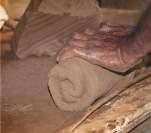
•Craftsman also makes hand modeled sculptures out of clay with a conceptual contemporary art.
•Facial features are made or given shape by hands in the process of clay modeling.

•Pointed tool is used to give proper shape
•Pointed tool is used to give proper shape to the facial features.
•The clay modeled face is complete.
•The face is attached to the body part and merged together.
•Completed sculptures sculpted in a contemporary style.
•Kiln used to bake the terracotta products.
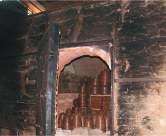
Terracotta
Technique
Technique
Technique Technique Technique
Equipment: Clay mixing machine (pig mill)
Equipment: Kiln
Equipment: Electric motor based potter’s wheel
of
| 72 www.dsource.in
Equipment’s and Techniques involved in Different Types
Crafts
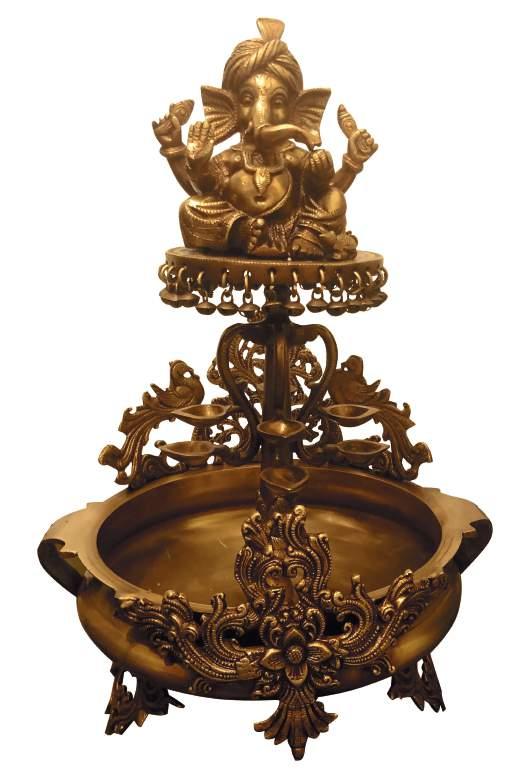
73 | Equipment’s
www.dsource.in
and Techniques involved in Different Types of Crafts
Brass Metal casting

•The furnace is constructed all around the mold without allowing any gap around it.
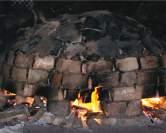
•The dried mold is set on fire for melting the wax inside and the molten wax is collected using a vessel, which can be reused.
•Artisan making a pit in the ground to accommodate the mold for casting.
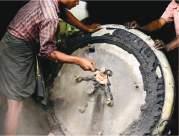


•The furnace built around the mold using bricks are being removed.
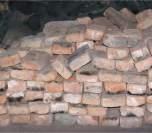
•Scrap metal is beaten into tiny pieces to be melted into molten metal.

•Metal pieces are being burnt.
•Artisan using roller to grind the clay pieces to powder.
•Artisan uses the powdered clay, adds water and makes it into a paste. •This paste is made into the desired shape. Artisan turns excess clay from the mold to remove excess and give it a definite shape.
•The mold is being moved to the pit made in the ground.
•Mold is placed in the pit covering with sand all around firmly. •Only the holes for pouring the molten metal and vent holes are spared and rest are covered completely with the sand.
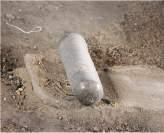

•Molten metal is poured into the mold while the mold is still hot in order to avoid sudden cooling and breakage of the casting.
•Stones are kept on it to mark the position of the mold.
•After the alloy solidifies in the mold it is taken out from ground and the clay is broken using hammers.


•Chisels are also used for this purpose if the product is a fine detailed one having minute details.
•The casting is obtained but is unfinished and further processing is required.
Equipment: Metal Brush
Technique Technique
Technique
Equipment: Roller stone
Brick Furnace
Equipment: Hammer
Types of
| 74 www.dsource.in
Equipment’s and Techniques involved in Different
Crafts
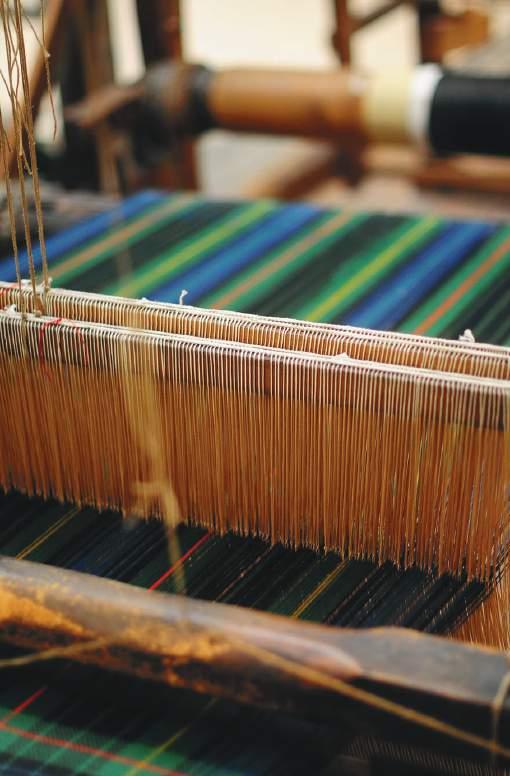
75 |
www.dsource.in
Equipments and techniques involved in different types of craft
The steps followedv in these three techniques have been observed quiet seperately. While comparing reku technique is found to be most simple technique.
Solid colour, bordor and pallaw is considered as high quality saree. The sarees with dye coloured are low quality ones while those sarees made with these techniques are considered as art and appreciated.
Hence it is highly essential to train younger generations to learn these techniques to preserve art which has been appreciated since the begining of their culture.
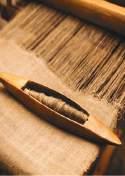
Petni technique is the name of traditional technique practiced in weaving Kancheepuram silk sarees to get two sections of colours in the length way of body warp, viz. pallau part in one colour and the remaining body part in another colour.
Process of inter locking the loops of red ends by making the loops of blue ends in between the pegs is called as 'Kondi' peg warping technique.
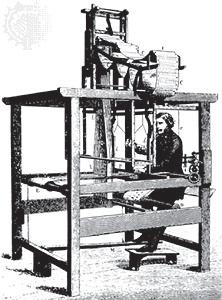
Reku technique is the technique used in weaving Dharmavaram silk sarees to get two colours in the length of body warp.
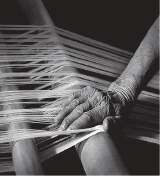
Technique:
Petni, Kondi and Reku are the names of three different traditional techniques being practiced by the handloom weavers in preparing the warp to produce pallau, body and border of silk sarees in solid colours.

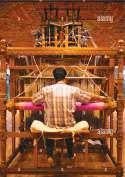
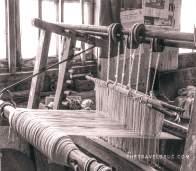
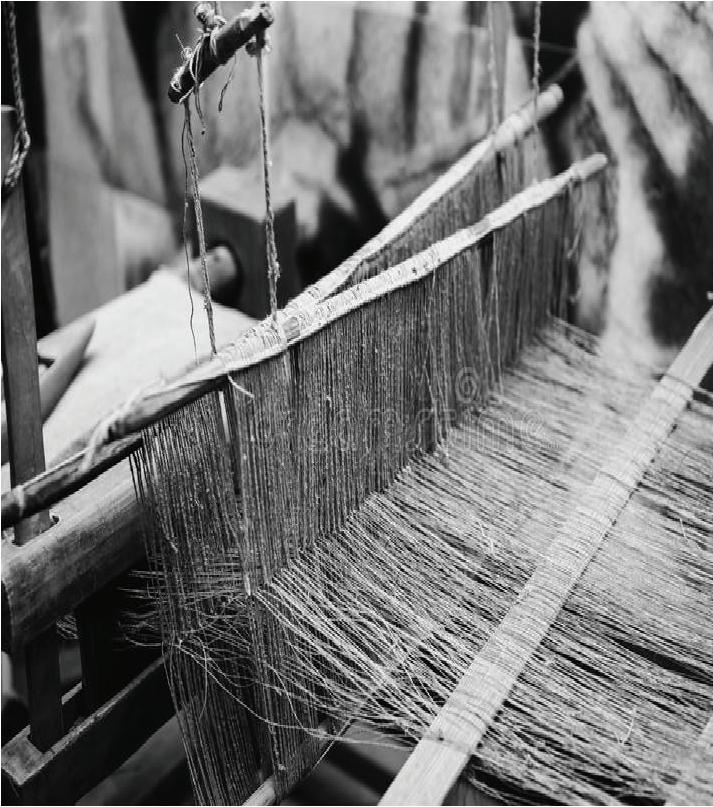

Solid colour in any part of the saree is obtained by weft and weaving.
Weaving pallaw, bordor and body is one of the traditional features of traditional Indian sarees since ages. First 1/2 to 3/4 of the saree is called a pallaw.
They will have a different set of patterns and colours from the rest of the saree.
Saree will be made out of Cotton and silk material mostly.
Other products made out of weaving are dhotis, churidhar materials .
Handloom
of craft | 76 www.dsource.com
Equipments and techniques involved in different types
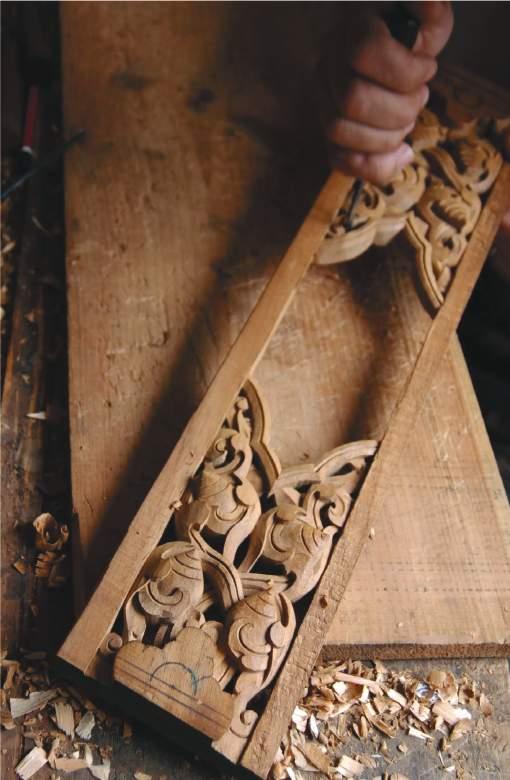
77 | Equipment’s and Techniques involved in Different Types of Crafts www.dsource.in
Wooden craft
Equipments
The tools that are required for woodcarving are: A set of chisels – used to carve and give depths to the wooden board.


• Hammer – used in chiseling out the wood. Pencils & Pens –used to draw the reference lines to carve.
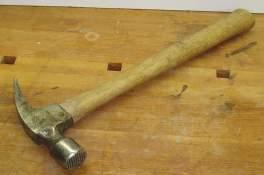
Papers – on which drawings are usually done and is cut along the outline. Scissors –used to cut papers. Knife –used to cut tricky drawings drawn on paper.
Scale – used to measure the length of the wood. Straight gouges – used to mark outlines before chipping wood.
Techniques
Pattern, Blocking, Detailing, Surfacing, and Smoothening
A wood carver begins a new carving by selecting a chunk of wood the approximate size and shape of the figure he or she wishes to create or if the carving is to be large, several pieces of wood may be laminated together to create the required size
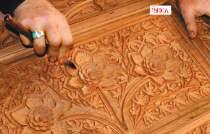
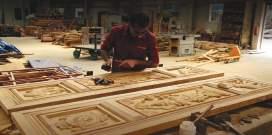
Once the sculptor has selected their wood, he or she begins a general shaping process using gouges of various sizes.
Once the general shape is made, the carver may use a variety of tools for creating details. After the carving and finishing is completed, the artist may seal & colour the wood with a variety of natural oils, such as walnut or linseed oil which protects the wood from dirt and moisture (varnish)
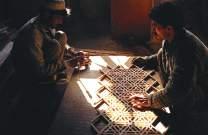 Different types of chisels for fine working
Chisels and files
Hammer
Different types of chisels for fine working
Chisels and files
Hammer
of craft | 78 www.yehaindia.com
Equipments and techniques involved in different
types
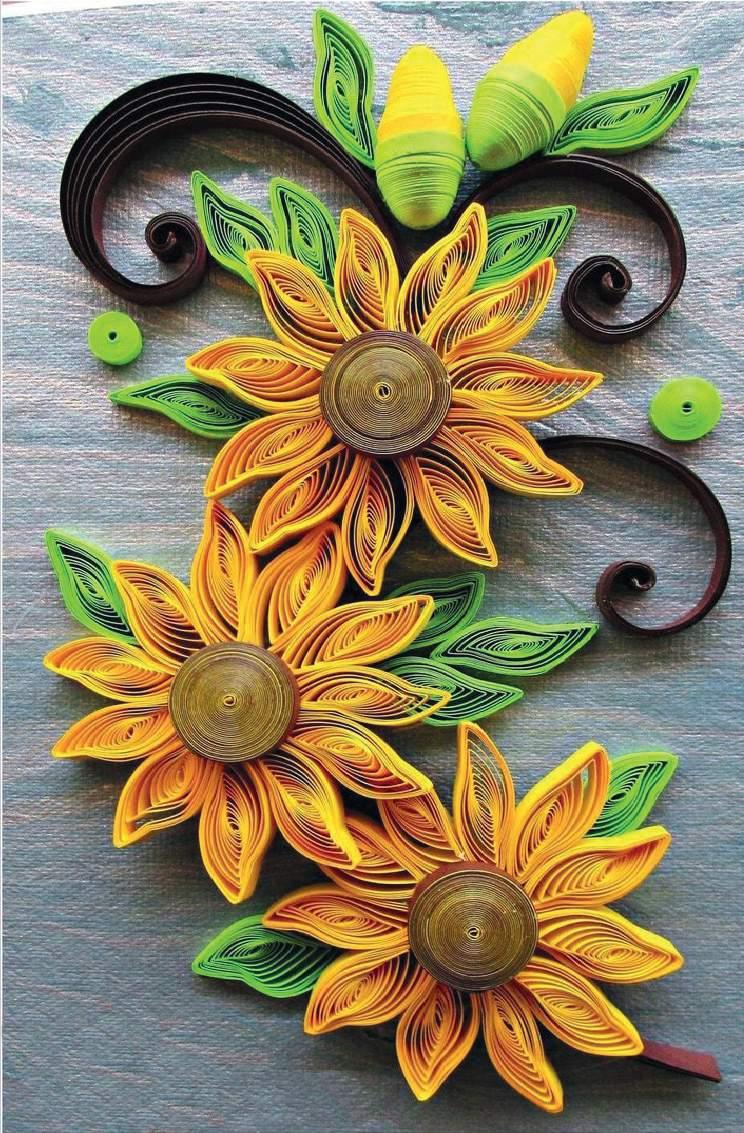
79 | Equipment’s
of
www.dsource.in
and Techniques involved in Different Types
Crafts
Die cutting can be an excellent way to add a new element to your paper crafting techniques.


It allows you to create custom paper pieces that you can use for scrapbooking, making birthday or Christmas cards, or anything else that you can think of.
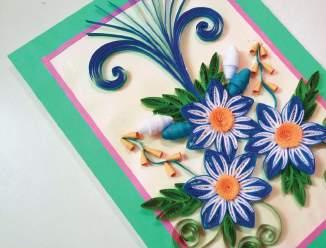
The possibilities are practically endless to what you can do with a few pieces of paper and a die cutting machine.
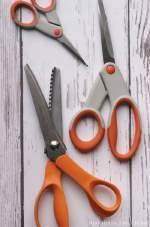

Paper craft Equipment : Knife
Equipment : Scissor
Paper craft Equipment Paper Scissors Ruler Knife Technique
and Techniques involved in Different Types of Crafts | 80 www.dsource.in
Image description Equipment’s

81 | Equipment’s and Techniques involved in Different Types of Crafts www.dsource.in
Equipments
•Chisel : Mainly ised for purpose of shaving of upper layers of the horn and used for defining the shape of the item.
•Sandpaper : Used to smoothen the edges and curves.
Techniques
•The process begins with the upper layers of the horn being stripped off with chisels.
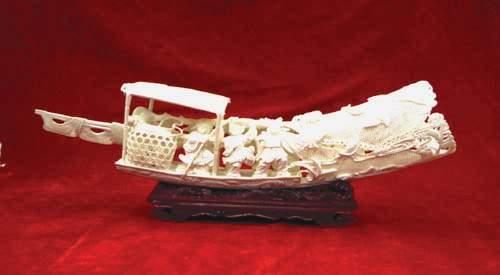

•The desired shape is marked with chalk, and the extraneous surfaces are sawn or chiseled off.
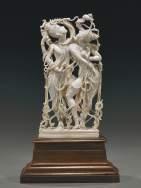
•The horn may also be moulded to the desire shape by softening it through heating
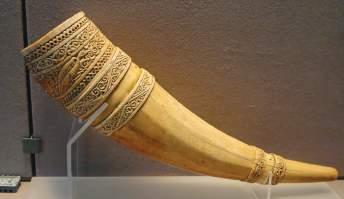
•It is then tempered with water and polished. The horn is sandpapered and rubbed with the spine of a soaked leaf from the kadaplaava or small jackfruit tree this process induces a milky liquid to form and settle on the surface of the horn.
•A black, sooty paste-prepared by burning a palm leaves or panayola and mixing the residual ash with water - is rubbed onto the horn until its surface heats up doe to friction and the paste is absorbed into the grainy structure of the horn and lends it a fine sheen.
•Textures are created by applying a mixture of chalk and adhesive to etched patterns; the polished areas gleam while the etched areas catch colour.
Horn,Bone & Ivory crafts
Elephant tusk craft
Types of Crafts | 82 www.dsource.in
Elephant ivory soveneir Equipment’s and Techniques involved in Different
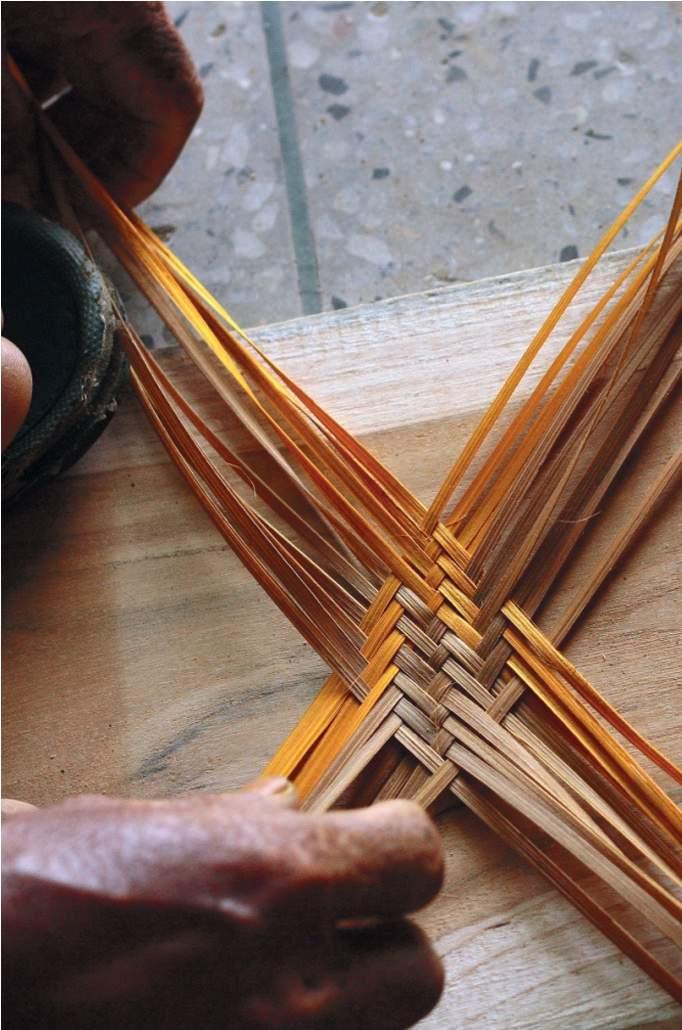
83 | Equipment’s and Techniques involved in Different Types of Crafts www.dsource.in
Bamboo Craft
Equipment
• Kati (Small Knife)
• Andhra Kati (Big Knife)
• Katrika (Scissors)
• Tepupadi/ Pallaga (Sharpening wood)
• Hand planners
• Hex saw machine
• Frame loom
• Measuring tape
• Fevibond
• Sandpaper – 80, 100 and 120
• River stone
• Plainer
• Hand Cutter

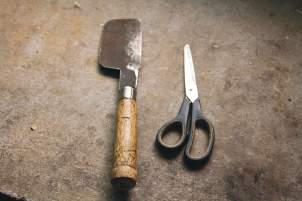
Technique
Making process starts by splitting lengthy bamboo into small thin pieces. In case of basket weaving, the artisan cuts 32 splits from single bamboo. The outer skin of bamboo is peeled and soaked in water for few minutes as it is easy to weave the baskets with soaked bamboo. Initially the base part is made with splits of 1-inch width bamboo. Small splits of bamboo are used to weave the walls of basket. The weaving patterns of base may differ from product to product like carrying baskets, shopping baskets, containers, storage baskets and fruit baskets.
Bamboo basket consists of three parts:

• Base part
• Walls and
• Rim
Initially, the base part is made with thick 1-inch bamboo strips. A thin strip of one inch metal sheet is inserted to the base along with bamboo to give more strength to the bamboo basket. Once base weaving is completed, the side walls are weaved with small round shaped bamboo strips. Weaving is done by arranging the bamboo strips in criss-cross manner. During the side wall weaving of a basket, the colored bamboo strips are inserted to enhance the outer look.
Bamboo strips are dyed by immersing the bamboo strips in a color solution made by mixing color powder and water. Once the side walls are weaved, the rim of bamboo basket is made by fixing broad and thick strip of bamboo to the formed basket. The rim helps for better grip. A handle made of bamboo strips is added to the few products like fruit and flower baskets.
and Techniques involved in Different Types of Crafts | 84 www.dsource.in
Equipment’s
Andhra Kati and Scissors
Creating bamboo strips
Weaving bamboo strips

85 | Equipment’s and
of
www.dsource.in
Techniques involved in Different Types
Crafts
Nettoor craft
Equipment
Uli /chisel : There are different types of chisels in various sizes are used during the process of making wooden boxes as well as metal casting and its finishing.
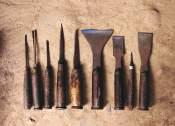
Pozhichuli & Cheevuli (Plainer) : There are the two tools used for making the surface even and smooth.
Gushimattom : It is handmade wooden tool which is used for marking the measurements on the planks.
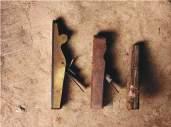
Chuttika: Chuttika means hammers, there are different types wooden and metal hammers are used in the making of Nettur Petti.


Measuring tool: There are different types of metallic scales used. Other than these different types of filers, wooden saw, metal cutting blade, nails, scissors are also used.
Technique
Once the wood is selected, it is cut into planks. The making process of Nettur Petti starts with deciding the measurement according to the ‘Tachusastra Vidhi’. The measurements are marked on the plank according to the rules and regulations of Tachusastram.
The lower part of petti consist of 7 pieces where as the upper part consists of 4 pieces.
The surfaces of the planks are even out by scraping the uneven parts with the use of cheevuli (Plainer).Once the planks are even out and cut it into individual pieces in required shapes, making of top lid and lower box is taken place.
Making of top portion of the box is the complicated process because it has to be joined by four pieces of woods simultaneously. The edges of the pieces have biased finishing obtaining a fine structure. The top of the Nettur petti is constructed in a shape of the roof of traditional Kerala house architecture.
The angles are made with help of the tool ‘gushimattom’ and the biased finishing the edges are done by cheevuli. Later on with the help of ‘pozhichuli’ groves are made so the top portion can accurately sit with the lower part of the box which will give an intact locking system also.
Once the top part of the box is ready, then bottom part is made by following the same rules and methods used for making top part.
| 86 www.dsource.in
Equipment’s and Techniques involved in Different Types of Crafts
Different types of Uli (left) , Pozhichuli & Cheevuli (right) and Gushimattam (bottom)
Chiselling the bevels of Nettoor petti
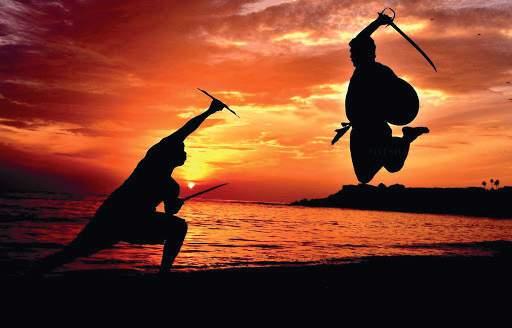
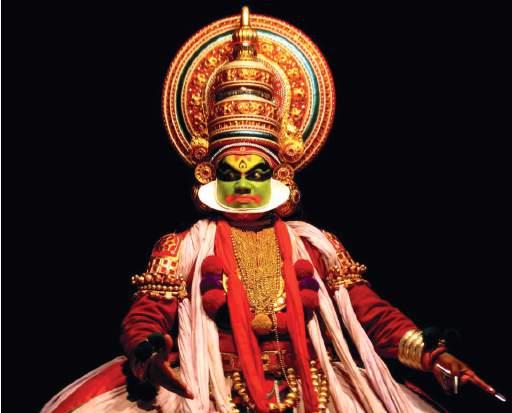
https://www.keralatourism.org/artforms/kathakali-kerala-theatre/15 89 | Spatial requirement for arts
SPATIAL REQUIREMENT FOR ART
ONSTAGE DANCE AND ACTING
kathakali chakyarkoothu Mohiniyattam chavittunadakam ottamthullal duffmuttu margamkali oppana
OFFSTAGE PERFORMANCES
ONSTAGE MUSIC SPORT RELATED
theyyam classical kalaripayattu sopana sangeetham urumi carnatic folk songs
padayani mudiyett gadhika
midhuva dance
The spaces are divided on the basis of their spacial needs ,
* the first group which is the onstage dance events includes the art forms like mohiniattam , kathakali etc which happens on the stage .They do need all the facilities of the stages including lighting , acoustics etc . also they utilize the back stage areas like the green rooms dressing rooms etc.
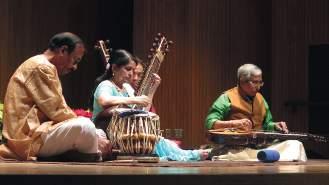
* the second group include events like thayyam which is usually conducted on a larger area free from the confines of the Stage . This usually happens in an open ground on bare soil where the motives are made with colorful powder and Eventually they are distorted.
* the next category includes the onstage music events where the classical music and the instruments are played. This is done with careful acoustic treatments and practices
* the fourth category includes the traditional sports like the kalari which also needs

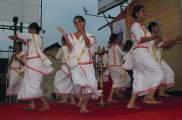
Spatial requirement for arts | 90 https://www.aljazeera.com/gallery/2021/10/3/pho-



https://500px.com/p/khunchild? 91 | Spatial requirement for arts
Arms are extended straight out from shoulder and are parallel to ground and wrist form right angles between hands and arms while it hangs limply.
Kathakali is an major form of classical Indian dance.It is a performing art.It is a story play genre of art.


It is an important genre in the Indian classical dance form, demanding long years of training. It is evolved from earlier temple art forms in the 17th centuary.It is a blend of dance, music and acting and dramatizes stories, which are mostly adapted from indian epics.

12 M
Kathakali is performed after sunset, this is to bring attention only towards mudras and facial expression, which is through the story is been narrated. The traditional theme of kathakali are folk stories. It is so placed as to face the diety.
There is a roof within the main roof which is highly ornamented to bring contrast. Performance is done on a raised stage
16 M
People playing sopana ,or hanging curtains form an imaginary semi-circle
Basically 5-6M square or 5-6yards pordium or stage is used to perform kathakali. Basic step of kathakali is sort of BOX STEPS.
KATHAKALI
5M
5M 5
5 5M 5 5M 5
Spatial requirement for arts | 92 https://pixels.com/featured/1-namasthe-backyard-civilization-.html
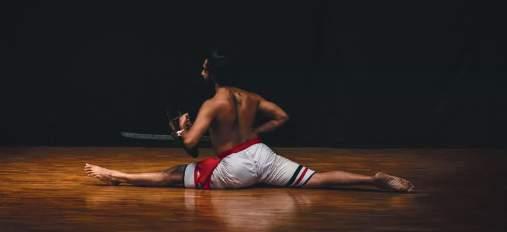
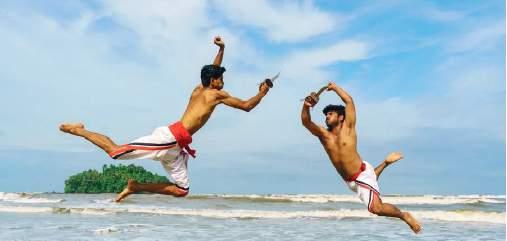
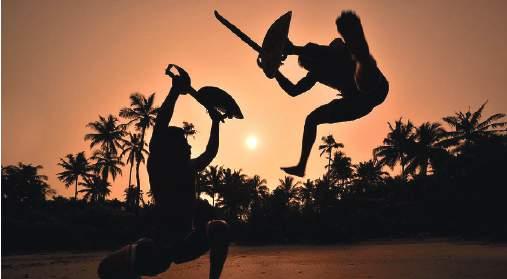
https://www.alamy.com/stock-photo-india-traditional-kathaka- 93 | Spatial requirement for arts
Kalaripayattu is an martial arts which basically include weapon,because it was designed for ancient battlefield.It is a performing art.It is defence art form.
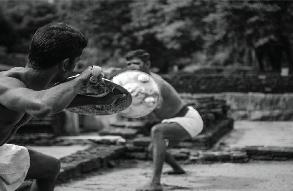

Entrance is from the east.Floor is prepared by digging ground upto 1.2M depth.Roofs are provided at hights, because of use of tools like urumi .
An arc measuring 10-15cm is drawn on the kalari floor wherewalls on the southern and western sides join as th centre of the arcSeven arc-shaped steps are completed, each leaving a space of 11cm from the edge of the just lower one.The whole 12.8 X 7.4M space is used for the performer.where the “adavu” is practised and performed within the kalar
1.2 12.8
vaykhandam Manushakhandam (housing)
Easakhandam (kalari) yamakhandam
Spatial requirement for arts | 94
KALARIPAYATTU https://wallpaperaccess.com/kathakali
Plotting of kalari 7.4
It is mentioned in the vadakkan pattukal, a collection of ballads written about the chekavar of Malabar region of Kerala.



95 | Spatial requirement for arts https://pixels.com/featured/1-namasthe-backyard-civilization-.html
Tholpavakooth is a form of shadow puppetry practiced in Kerala.It is an art form performed using leather puppets in temples or villages in specially built theaters called Koothumadam


The puppets are made of deerskin or goatskin and are held by a thin stick in one hand of the puppeteer while the other manipulates the limbs held by a thinner stick. Puppets can be as tall as 4 feet.
The Koothumadam is a 42 foot long stage. These are permanent structures in temples. It is usually conducted at night.
There will be a curtain throughout the length of the stage behind which the puppet show will be conducted with the help of burning oil wick lamps.
Choir
12.5 m
A Lamp
Choir SECTION AA’
Behind the curtain on a wooden beam 21 lighted lamps equidistant from each other are placed.
Spatial requirement for arts | 96 https://pixels.com/featured/1-namasthe-backyard-civilization-.html
THOLPAVAKOOTH
A’
Auditorium
Puppeteers
The upper portion of the curtain is white in colour and the lower portion is in black portion. The curtain should face the deities of the temple.
Husked coconuts cut in half serve as lamps.it is half filled with coconut oil provided with cotton wicks


97 | Spacial requirement https://www.flickr.com/photos/popeyee/5053723759
KOODIYATTAM
Koodiyattam is a traditional performing art form in the state of Kerala, India. It is a combination of ancient Sanskrit theatre with elements of Koothu, an ancient performing art from the Sangam era. In this dance form, the males are played by the chakiars and the females are played by the nangiars.

SECTIONS
Plan c c
A
A- It is typically the area for the brahmins to watch the performances
C- The area for people to watch the performance .
The koothambalam roof consist of hundreds of rafters connected to form a net shaped structure. This structure also helps in the acoustic quality of the sound that happens inside of the koothambalam.
CHAKYARKOOTHU
The Aryan Immigrants introduced this dance to Kerala. It is performed by the Chakiar caste members. The Hindus of the higher castes only can witness this highly orthodox entertainment.
Koothambalam is the theater in the temples where this dance is performed .this dance from is quiet similar to the kadhakali koodiyattam etc thus the spacial requirements are also almost same .
Spatial requirement | 98 https://www.flickr.com/photos/popeyee/5053723759
KOODIYATTAM/CHAKYARKOOTHU
The plan is quiet simple , koodiyattam is performed by 2 main people and then the mucisians who perform the chenda and the rest of the instruments , main emphasis being on the performers.The main lighting source on the plan is the oil lamp which emphasises the facial expressions and the hands . B
B - This shows the main stage where the main performances tends to happen . This mainly faces the diety of the temple
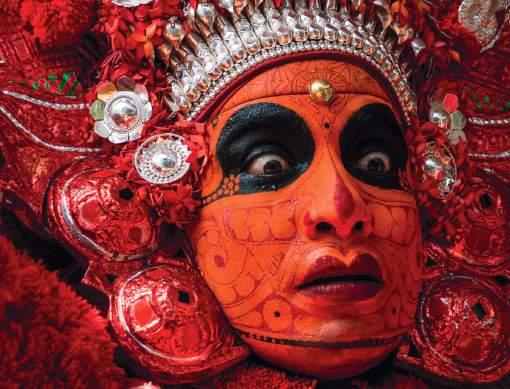
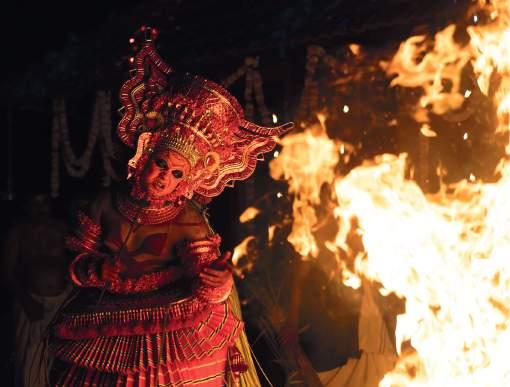
https://commons.wikimedia.org/wiki/File:Kathakali_Krishna.jpg 99 | Spacial requirement
Theyyam (Teyyam, Theyam or Bayyattam) is a popular dance form of worship in Kerala and Karnataka, India. theyyam embraced the customs, traditions and customs of a few thousand years. The theyyam players belong to the aboriginal low caste community in Kerala, and hold a prominent position in theyyam. The people of these regions view theyyam itself as a path to the gods and thus seek blessings from theyyam.
There are about 456 varieties of Theyyam. The theyyam was made by the men, except Devakoothu theyyam; Devakoothu is the only theyyam ritual performed by women.
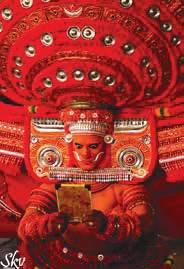
In Kerala, theyyam is predominantly formed in the Northern Malabar region (which includes present-day Kasargod, Kannur Districts, Mananthavady Taluk of Wayanad and Vadakara and Koyilandy Taluks of Kozhikode). A similar tradition is followed in the Mangalore district of karnataka

Spacial requirement
Dancing or supplication is usually performed in front of a district temple. It is also practiced in homes as an ancestor worship ritual.
There is no stage or curtain or other such arrangement of work. The devotees would be standing or some of them sitting on a sacred tree in front of the temple. In short, it is an open theater.
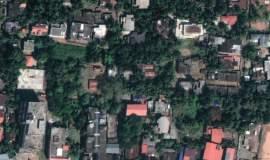
The functioning of a particular deity and positions in the sanctuary lasts from 12 to 24 hours from time to time. The main dancer who worships the central god of the shrine should remain in the tradition. Moreover, after sundown, the dancer could not eat the rest of the day.
Her make-up was done by professionals and other dancers. The first part of the operation is usually called Vellattam or Thottam. It is made without proper makeup or any decorative ornament. Only a small red hat was worn at the event.
The dancer and the drummers recite a traditional song, which describes myths and legends, of the gods of the sanctuary or of humanity to be appeased. This is in line with the playing of traditional musical instruments
THEYYAM
Puliyoor Kali Theyyam showing approximate Distance of there act
location of act in Karuvalli Sree Kurumba Bhagavathi Kavu
Puliyoor Kali Theyyam at Mathamangalam
About
https://commons.wikimedia.org/wiki/File:Kathakali_Krishna.jpg Spatial requirement | 100
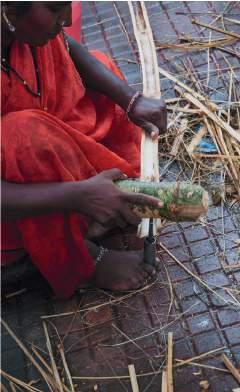
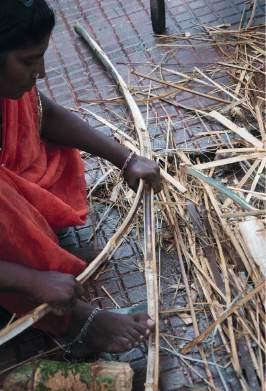
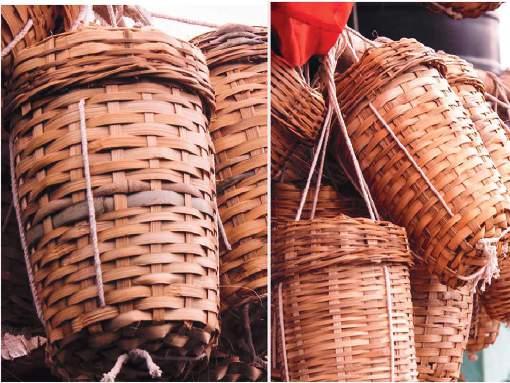
103
www.dsource.in
| Spatial Requirements for different types of crafts
Woman spliting bamboo into two halves.
Bamboo
Bamboo is a strong, fast growing and very sustainable material, having been used structurally for thousands of years in many parts of the world. In modern times, it has the potential to be an aesthetically pleasing and low-cost alternative to more conventional materials, such as timber, as demonstrated by some visually impressive recent structures.
This material's structural and sustainable qualities demonstrate that bamboo can be three times more resistant than steel and grow about 4 feet (1.22 meter) in just one day. In both its virgin form and as a composite, bamboo is structurally sound and incredibly resilient — even to earthquakes.
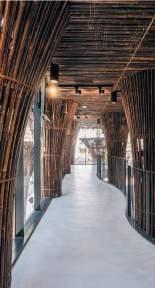
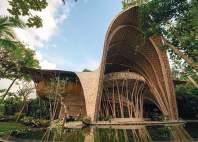
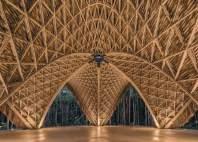
Treating of Bamboo:

Different processes stages are conducted for making different bamboo products. But each bamboo to be used goes through a common treatment process which helps to prevent any fungal attacks on the bamboo. The initial process can be categorized under following points.
• Cutting
Once the bamboo is bought from the farmers or the agencies it is cut into desired shape on the cutting machine.
• Treatment Once the basic cutting is done the poles goes for treatment in the treatment plant. The treatment process takes at least one day after which the poles are dried in sun.
• Slivering Bamboos are cut into thin strips using slivering machine and then further with using hand tools. These strips are again kept under the sun for drying.
Areas required for processing:
Total area required for bamboo workshop- 116 sqm Processing station- 47.2 sqm Manufacturing station-
Chick making- 7 sqm (2 people on 1 station)
Furniture making- 18 sqm (2 people on 1 station)
basket weaving and handicrafts- 24 sqm (3 station each) Circulation space- 19.24 sqm

www.dsource.in
of crafts | 104
Spatial Requirements for different types
source: pinterest
LOADING RAW MATERIAL STORAGE PROCESSING STATION MANUFACTURE STATION FINISHED PRODUCT STORAGE INTERMEDIATE SPACE
1.
2.
3.


https://www.dsource.in/resource/wood-carving-udupi/products 105 | Spatial Requirements for different types of crafts
The process of the wood carving starts by selection of the wood as per the required size of the products to be made. There are two qualities of wood, softer and harder woods. Softer wood is chosen when intricate designs have to be carved. Harder wood is used for making furniture and other house hold items.
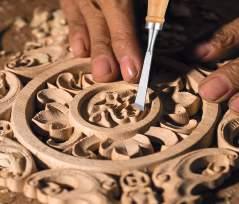
Display Area :25 sq.m
Raw Material Store :30 sq.m

Seasoning :25 sq.m
Equipment Room :50 sq.m
Design Room :15 sq.m
Carving – Small :16 sq.m


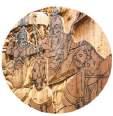


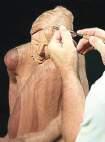
Assembling + Finishing :20 sq.m
Finish Store :32 sq.m
Staff Area : 20 sq.m
Learner's Area :20 sq.m
Toilet :16 sq.m
Pantry : 6 sq.m
www.dsource.in
Requirements for different types of crafts | 106
Spatial
involved:
Wood Carving Process
Spacial Requirements: Zoning diagram based on requirements Tools and Raw Materials • Chisels • L shaped Scale or Right-Angle • Hammer • V-Parting Tool • Wood Cutting Machine • Wooden Mallets • Gouge • Sand Paper Wood Selection and the design is first sketched on the surface Cut out sketch is obtained Outlines are cut out
using chisels Detailed work is carried out
Carving

107 | Spatial Requirements for different types of crafts www.dsource.in
Screw Pine Craft

The leaves of screwpines are sword like, thin and long, prickly margins, spiral arrangements and aerial roots, with a rough green surface. It grows side by rivers and streams. It helps to protect the water bodies and prevent soil erosion. The fleshy green plant is peeled into thin strips are dried in the sun and then diagonally plated to create mats and more products.
The leaves of this variety are long, strong and sturdy. Screw pine leaves from the plant are cut, thorns are removed and then the leaves are processed by heating in hot water. Then it is dried in the sunlight. Screw pine leaves are also treated & bleached to prevent them from fungus attack and also to bring glazing effect on the leaves.
Making process:
The large flowering plant- screw pine, grows rivers side mostly, and is collected from the people of that region.

The screw pine products makers get these raw materials from the local areas and continue with the further process.


The people are trained for about a month and later they come up with new designs and the designs appealed by clients.


The products that are weaved are small bags, hand bags, braided bags, coasters, bowl like holders, pillows, boxes with weaved lids, file holders, sling bags, jewelry boxes and more.
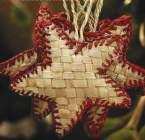


The products are handmade and most preferred cause it is eco-friendly.

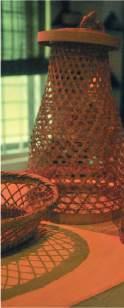
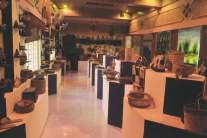
| 108
Spatial Requirements for different types
of crafts
Woman spliting bamboo into two halves.
2. Removing thorns 1. Collection of leaves 3. Rolling 4. Slicing 5. Dyeing 6. Weaving 7. Product making 2. 4. 5. 6. 7. 3. 1. Storage Exibition and Sale Workshop Zoning based on their requirement Drying Space Tailoring Space Requirements of Screw pine Workshop https://www.dsource.in/resource/screw-pine-craft-thrissur-kerala/making-process

109 | Spatial Requirements for different types of crafts www.dsource.in
Aranmula Kannadi is one of the authentic and traditional handmade metal craft of Kerala.
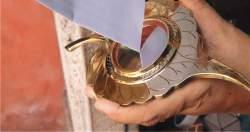
This craft has been popular and universally acclaimed. It has been marked under Geographical Identification (GI) in year 2004-05 in Aranmula. There are few characteristics to identify Aranmula Kannadi (mirror), the reflection obtained on the mirror is possessed on the upper surface, whereas in glass mirror the reflection is in bottom layer, thus there is no gap between the mirror and the object when it is touched on the surface. The making of this mirror embeds multiple process that requires lots of patience and persistence.

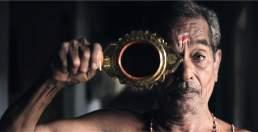
source: https://www.dsource.in/resource/bamboo-craft-vellore/making-process










| 110
Spatial Requirements for different types of crafts
Woman spliting bamboo into two halves.
Making process: Aaranmula
Requirements of Aaranmula Kannadi Workshop 1. Metal alloy is made of tin and copper 2. The mould is prepared with mud clay and 3. Moulded metal is poured inside gap between two baked mud 4. Sheated in around 745 degree 5. Mould is broken and metal cast is taken 6. Metal cast is cut into desired 7. The metal is rubbed with different materials to 8. Metal mirror is furtherly polished by lapping and Storage Exibition and Sale Workshop Zoning based on their requirement Klin www.dsource.in
Kannadi

111 | Spatial Requirements for different types of
pinterest
crafts
Terracotta
Terra cotta, also commonly spelled terracotta, is a building material created from clay. This material has been used in architecture and building for thousands of years.
Terra cotta has become widely utilized because when compared to other building materials, it is cheap and easy to to shape; it is essentially just a clay product fired under specific techniques.
The clay is dried before being screened and filtered to remove impurities that alter the consistecy, colour, and other qualities of the clay.
Raw clay contains foreign materials, minerals, boulders and other items that must be removed during this procedure.
Terracotta sculptures are made from clay, which is the most basic raw material.

Thedough is made by mixing sand and matti-clay with water. The main instrument used to create the fundamental shapes of the idol is the potter's wheel.

Making process Requirements of Terracotta workshop

The making process involves different stages such as clay refining, clay mixing, throwing on the wheel, drying and firing.
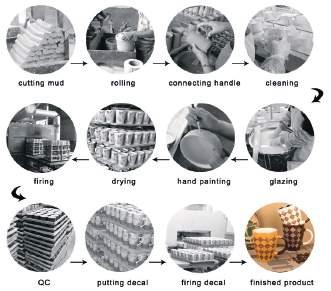
Display Area : 25 sq.m
Clay Storage : 20 sq.m
Mixing : 25 sq.m
Design Room : 10 sq.m
Working area (15 artists) : 250 sq.m
Kiln (2 Courtyard kilns) : 20 sq.m
Unglazed Item Store : 25 sq.m
Staff Area : 20 sq.m
Learner's Area : 20 sq.m
Toilet : 15 sq.m
Pantry : 6 sq.m
www.dsource.in
of crafts | 112
Spatial Requirements for different types
source: pinterest
2.
STEPS: 1. working with clay
glazing and coloring 3. firing in a kiln 4. potential leaching
Zoning based on their requirement


113 | Spatial Requirements for different types of crafts pinterest
Chenda is a south Indian cylindrical percussion instrument originated in Kerala. Mainly used while accompanying the classical dance of Kathakali,Koodiyattam and it is also one among the “PANCHAVADHYAM”

Chenda is divided into two portions - Edamthala and Valamthala:

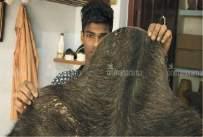
1. 2 Layers of skin smooth rythm cow skin.
2. 7 Layers of skin sturdy rythm bull skin.
The cylindrical wooden part of the instrument is made of jackfruit tree wood. The one carved out of trunk and the skin of cow and buffalo are jointly fastened at the ends. The cylindrical wooden part of the instrument is made of jackfruit tree wood. The one carved out of trunk and the skin of cow and buffalo are jointly fastened at the ends.
Process involved:
Be it a Mridangam, or a smaller in size Idaykka, the process is labour intensive. A single instrument has to go through multiple stages of production that requires hand work. The primary necessity of the percussion instrument is the animal hyde/skin which we obtain from the abattoir.

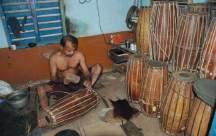

The base drum is made using jackfruit wood or Kanikonna. The dried skin is the cut to length and attached to the ends of the drum, sealed and knotted to perfection using hands. The drums are balanced between the legs, and the outerstraps made of buffalo skin are inserted through small slits round the sides of the mridangam. The strings are pulled and fastened tightly to set tension at all spots to create the perfect shruthi or the tone at all points.

Zoning Requirements
Woman spliting bamboo into two halves.
An even more difficult task demanding precision is creating the black circular ring that you spot on the centre of the mridangam sides and the tabla. The process of making them is called 'mashiyidal'.The black powder is obtained from a stone called puranakallu, rich in iron. These stones are mostly taken from temple ponds. The powder is then mixed with boiled rice, kneaded well to a paste and is smeared on the mridangam head the sides of the mridangam. The strings are pulled and fastened tightly to set tension at all spots to create the perfect shruthi or the tone at all points

onmanorama.com
| 114
Spatial Requirements for different types of crafts
The skin of cow, buffalo and female goat find use in making of a Mridangam. The skin collected is dipped in water for 2 days, removed of any hair and is left open in the brightsun to dry. Nails are used to fix the stretched parchment firm on the ground to air out.
Musical Instruments (Chenda)

115 | Spatial Requirements for different types of crafts https://economictimes.indiatimes.com
Handloom
The main material used here in handloom is cotton yarn.
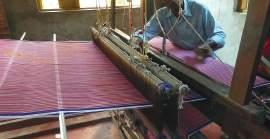
Four types of handlooms are present here: 1. Kuthumpully - Thrissur


Chendamangalam - Ernakuklam
Azhikode - Kannur
General working process
Making process
Raw materials bought are boiled with starch in the boiler for about 24 hrs then dried under shade completely.
The desired colour of yarn are dyed in the dyeing tanks with right quantity of dyes, supporting chemicals and temperature for the





Yarns are wound to the pirns by the charaka equipment for the weaving process.


After the cotton materials are woven it is taken to the nearby finishing process unit where the final finish to the fabrics are given and brought back to the weaving unit for sale.
Zoning Requirements
By the passing of the fly shuttle the weaving takes place and each weaver weaves.
As per the pattern to be obtained the yarns are wound on to the warping frames by the warping paddle (of wooden bat shape) and fed to the loom.
Raw Material Store : 20 sq.m
Design Room : 10 sq.m
Cone roll : 30 sq.m
Beam Roll : 15 sq.m
Weaving (10 looms) : 160 sq.m
Cutting / Check : 18 sq.m
Packing : 18 sq.m
Store : 20 sq.m
Staff Area : 20 sq.m
Learner's Area : 20 sq.m
Woman spliting bamboo into two halves.

| 116
Spatial Requirements for different types of crafts
https://www.dsource.in
1.
2.
3. Drying,
4.
1. 2. 3. 4.
2.
3.
Spinning
Weaving
printing, finishing
Garments manufacturing
Exhibition Space Storage space Outdoor working space working space
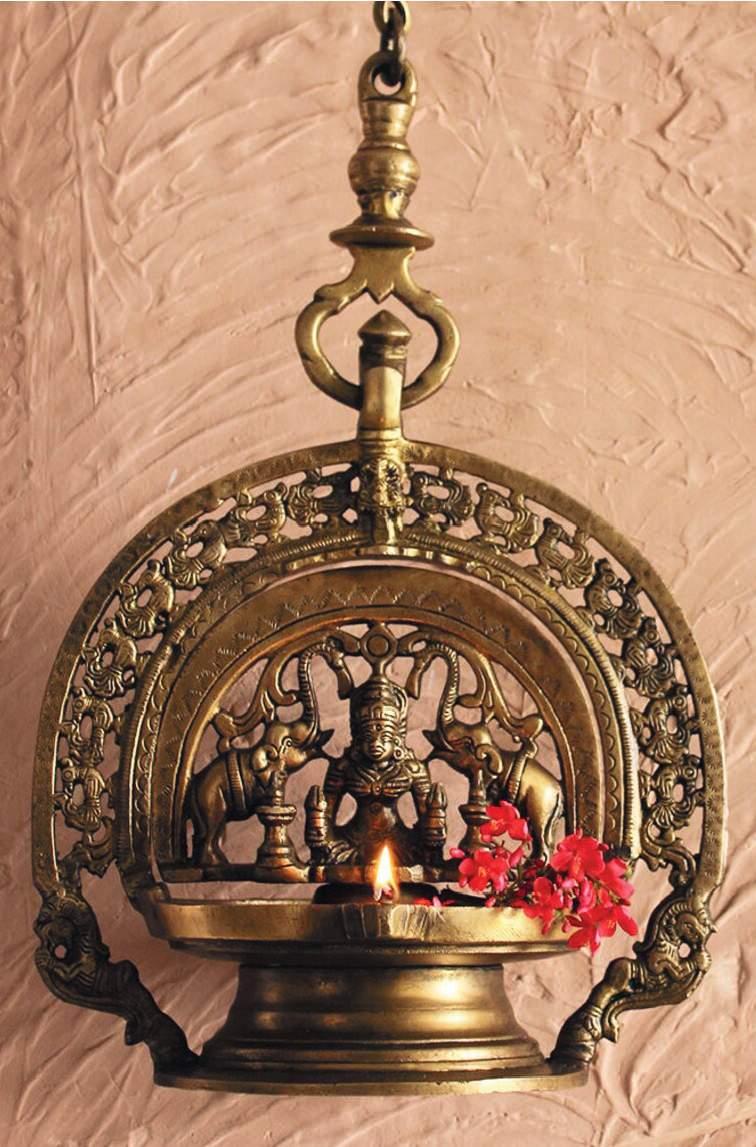
117 | Spatial Requirements for different types of crafts www.dsource.in
Brass Casting

Kerala is one of the finest places to find exclusive arts and handicrafts. Metal craft is the pride of gods own country, Kerala. Bell metal that is Brass casting is one of the oldest traditional art forms practiced still now in Kerala. Brass metal is been acquired in various metal art forms because of its gold like appearances, lustrous features and its combination of high workability with hand tools and durability. Brass metal is also used in musical instruments like saxophone, harmonica, trumpet and many more because of its acoustic property. Idols, exquisite variety of traditional lamps, arches and pedestals for the idols and many decoratives for the temples are made out of brass. Multi-layered lamps, the Greek lamp (Changalavatta), the Archana lamp, the Arati Dipa , the Aranmula metal mirror are few fame products made out of brass metal in Kerala. Even now few artisans from Trivandrum practices the Koftagari style of work in figures of deities, landscapes, floral designs and fancy articles.
Process:
1) Wax is prepared.
2) Required shape is made by warming it with fire from gas.

3) Moulding is done in various stages with sand and clay.




4) Second layer is done with soil and clay mixed with water.


5) Mould is kept in sun.
6) Melting of metal.
7) Metal is collected in mould.
8) Once the metal is cooled, it is broken with hammer and then metal wires are seen.



9) Wire is seperated and preserved for reuse.
10) Mould is scrapped out from the casted models and inside sand base models are removed.
11) The obtained metal is chiselled, buffed with emery paper , washed with nitric acid and smoothened.
12) Models are brushed and polished.
open plane space
Working space:
of crafts | 118 www.dsource.in
Spatial Requirements for different types
Epilogue
PRADYOT



Ray of Light

CORE MEMBERS














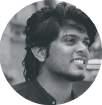
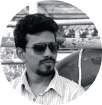





THE TEAM FACULTIES IN CHARGE
Ar. Adarsh Viswam
Ar. Goutham S Ar. Devi Syam
Ar. Vivek Venugopal
Illustrator Illustrator Illustrator Illustrator Publishing Publishing Illustrator Illustrator Littérateur Littérateur Class
Class
Editor Editor
Shanel Scaria George
Cordinator
Cordinator
Editor
Associate Professor Associate Professor Assistant Professor Assistant Professor
Febin Paul Adil Mohammad
Sandeep Sanker S
Sheba Susan Aby
Neethu Mathew
Namitha Joy
Anjana Abi Jose PV Arjun
Vaisakh S
Gautum E Ajith
Confin S
Raj
Rhea Ann Pothan
A
Anagha
Ryan C Pereira



















 Mary Ann Paul
CONTRIBUTORS
Anakha Ajith
Liya Elizabeth Gemini
Meera Fathima M
Mohammad Irfan Khan
Akshay Murukesh
Malvika Dileep Kumar Nikhil S Panicker Anjali J
Anusree Ashokan
Joby Johnson
Chandana R
Abhirami Jwala Raghu
Annie Bosco
Sreevas Alampady Varun S
Behja Jasmine
Ayana CM
Sidharth I
Mary Ann Paul
CONTRIBUTORS
Anakha Ajith
Liya Elizabeth Gemini
Meera Fathima M
Mohammad Irfan Khan
Akshay Murukesh
Malvika Dileep Kumar Nikhil S Panicker Anjali J
Anusree Ashokan
Joby Johnson
Chandana R
Abhirami Jwala Raghu
Annie Bosco
Sreevas Alampady Varun S
Behja Jasmine
Ayana CM
Sidharth I
PRADYOT



Ray of Light








































































 Tholpava Koothu
Kalaripayattu
Kathakali
Tholpava Koothu
Kalaripayattu
Kathakali





















































































































 Udukku
Udukku
 Dolak Mizhav
Dolak Mizhav
































 Trivandrum
Kollam
Pathanamthitta
Idukki
Ernakulam
Thrissur
Palakad
Malapuram
Kozhikode
Wayanad
Kannur
Kasargod Kottayam
Alapuzha
Trivandrum
Kollam
Pathanamthitta
Idukki
Ernakulam
Thrissur
Palakad
Malapuram
Kozhikode
Wayanad
Kannur
Kasargod Kottayam
Alapuzha



























































































































 Different types of chisels for fine working
Chisels and files
Hammer
Different types of chisels for fine working
Chisels and files
Hammer








































































































































































 Mary Ann Paul
CONTRIBUTORS
Anakha Ajith
Liya Elizabeth Gemini
Meera Fathima M
Mohammad Irfan Khan
Akshay Murukesh
Malvika Dileep Kumar Nikhil S Panicker Anjali J
Anusree Ashokan
Joby Johnson
Chandana R
Abhirami Jwala Raghu
Annie Bosco
Sreevas Alampady Varun S
Behja Jasmine
Ayana CM
Sidharth I
Mary Ann Paul
CONTRIBUTORS
Anakha Ajith
Liya Elizabeth Gemini
Meera Fathima M
Mohammad Irfan Khan
Akshay Murukesh
Malvika Dileep Kumar Nikhil S Panicker Anjali J
Anusree Ashokan
Joby Johnson
Chandana R
Abhirami Jwala Raghu
Annie Bosco
Sreevas Alampady Varun S
Behja Jasmine
Ayana CM
Sidharth I